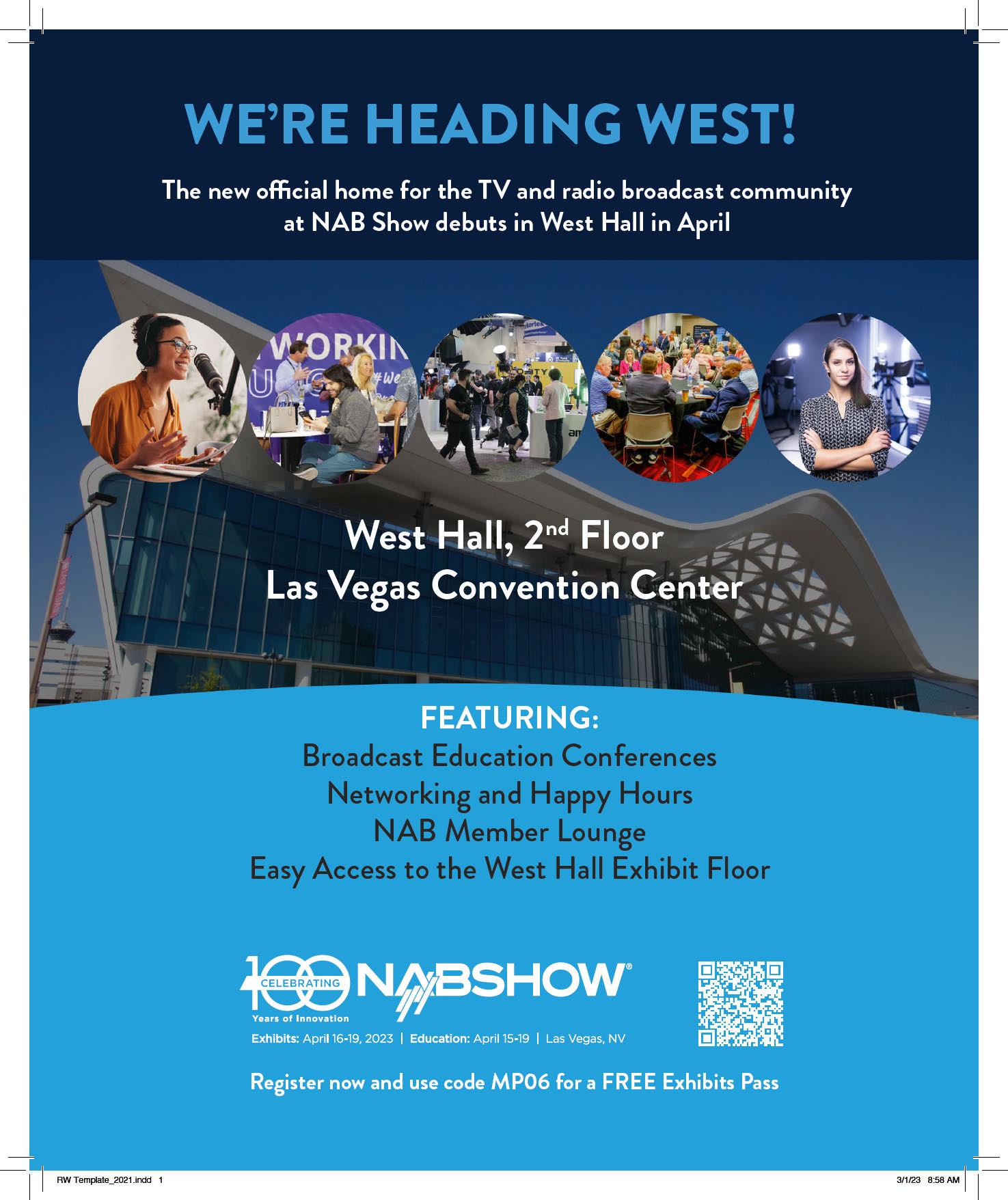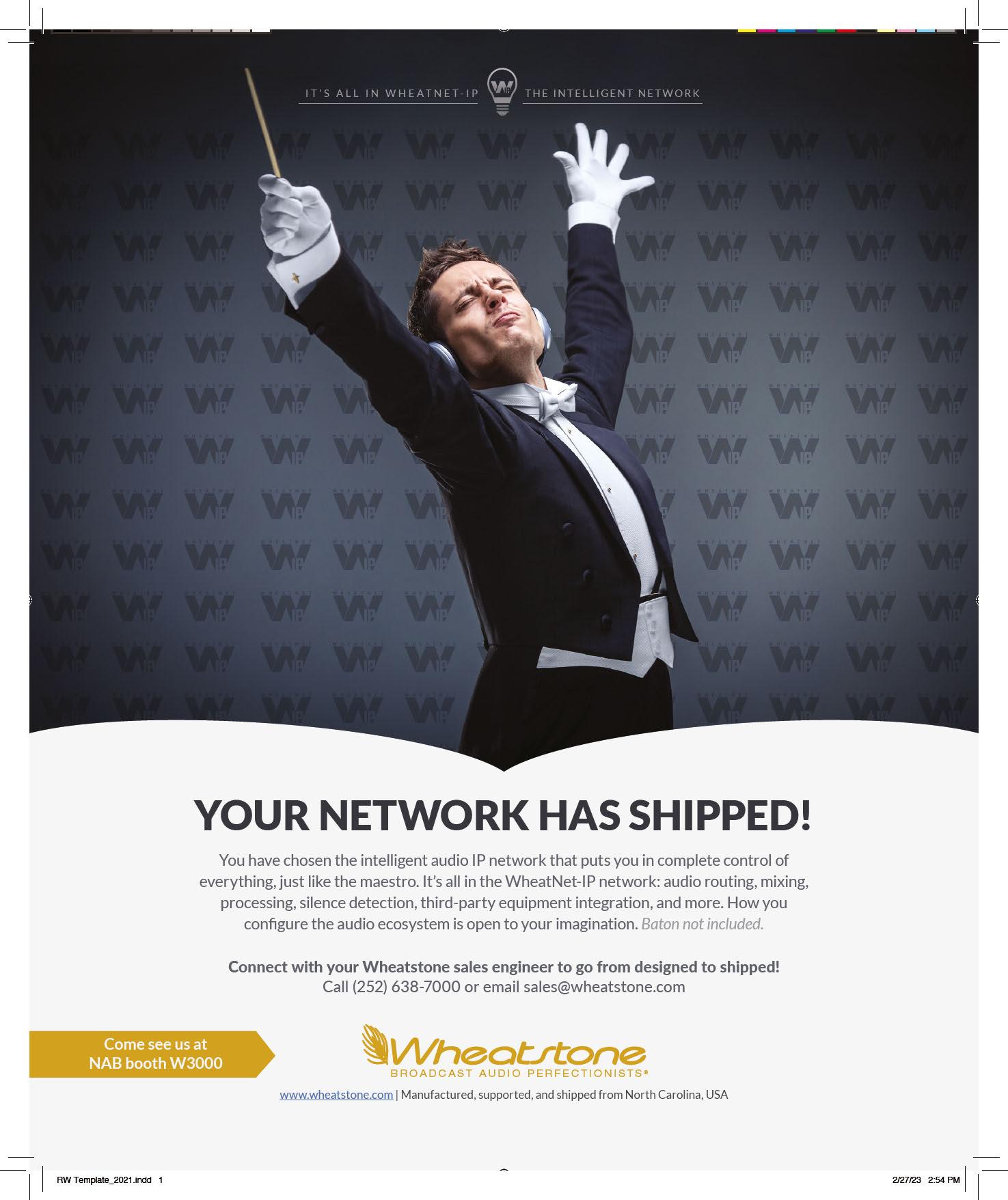

Make Your Streams Stand Out

Stream up to eight programs at once, each with four outputs for a total of 32 streams. Full suite of stream-specific audio processing tools. Optimize performance of audio content.

AAC, MP3 and Opus encoders. Reaching a broad range of end user devices and players.

Metadata agnostic. Lua transformation filters adapt metadata input from any automation system into any required output format.
Cloud-ready for the future, yet compatible with standard CDN and streaming platforms now. Supports HLS, Icecast, RTMP, and RTP streams.
All-inclusive Linux and AoIP appliance. No Windows® drivers, updates or PC needed. Add Streamblade to any audio network via WheatNet-IP, analog, AES3, or AES67 inputs or add Wheatstream to any existing WheatNet-IP or AES67 compatible networks.

wheatstone.com/stream-rw21a




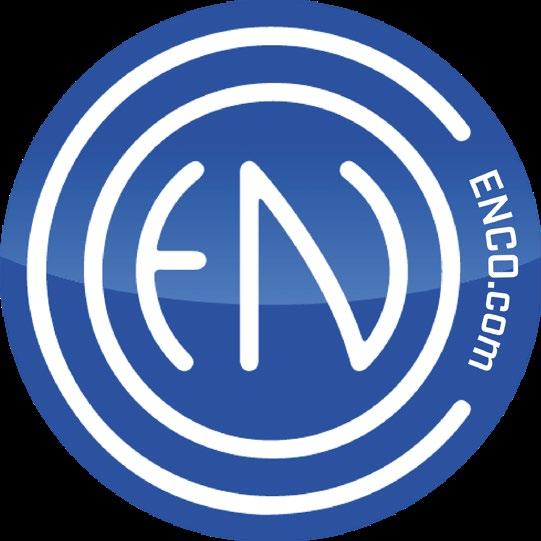

www.radioworld.com
FOLLOW US
www.twitter.com/radioworld_news
www.facebook.com/RadioWorldMagazine
CONTENT
Managing Director, Content & Editor in Chief Paul J. McLane, paul.mclane@futurenet.com, 845-414-6105
Content Producer & SmartBrief Editor Elle Kehres, elle.kehres@futurenet.com
Technical Advisors Thomas R. McGinley, Doug Irwin
Technical Editor, RW Engineering Extra W.C. “Cris” Alexander
Contributors: Susan Ashworth, David Bialik, John Bisset, Edwin Bukont, James Careless, Ken Deutsch, Mark Durenberger, Charles Fitch, Donna Halper, Alan Jurison, Paul Kaminski, John Kean, Larry Langford, Mark Lapidus, Michael LeClair, Frank McCoy, Jim Peck, Mark Persons, Stephen M. Poole, James O’Neal, T. Carter Ross, John Schneider, Dan Slentz, Dennis Sloatman, Randy Stine, Tom Vernon, Jennifer Waits, Steve Walker, Chris Wygal
Production Manager Nicole Schilling
Group Art Director Nicole Cobban
Senior Design Director Lisa McIntosh
Senior Art Editor Will Shum
ADVERTISING SALES
Senior Business Director & Publisher, Radio World John Casey, john.casey@futurenet.com, 845-678-3839
Publisher, Radio World International
Raffaella Calabrese, raffaella.calabrese@futurenet.com, +39-320-891-1938
SUBSCRIBER CUSTOMER SERVICE
To subscribe, change your address, or check on your current account status, go to www.radioworld.com and click on Subscribe, email futureplc@computerfulfillment.com, call 888-266-5828, or write P.O. Box 1051, Lowell, MA 01853. Licensing/Reprints/Permissions
Radio World is available for licensing. Contact the Licensing team to discuss partnership opportunities. Head of Print Licensing Rachel Shaw licensing@futurenet.com
MANAGEMENT
SVP Wealth, B2B and Events Sarah Rees
Chief Revenue Officer, B2B Walt Phillips

Vice President, B2B Tech Group Carmel King
Vice President, Sales, B2B Tech Group Adam Goldstein
Head of Production US & UK Mark Constance
Head of Design Rodney Dive
FUTURE US, INC.
Future US LLC, 130 West 42nd Street, 7th Floor, New York, NY 10036
All contents ©Future US, Inc. or published under licence. All rights reserved. No part of this magazine may be used, stored, transmitted or reproduced in any way without the prior written permission of the publisher. Future Publishing Limited (company number 02008885) is registered in England and Wales. Registered office: Quay House, The Ambury, Bath BA1 1UA. All information contained in this publication is for information only and is, as far as we are aware, correct at the time of going to press. Future cannot accept any responsibility for errors or inaccuracies in such information. You are advised to contact manufacturers and retailers directly with regard to the price of products/services referred to in this publication. Apps and websites mentioned in this publication are not under our control. We are not responsible for their contents or any other changes or updates to them. This magazine is fully independent and not affiliated in any way with the companies mentioned herein.
If you submit material to us, you warrant that you own the material and/or have the necessary rights/ permissions to supply the material and you automatically grant Future and its licensees a licence to publish your submission in whole or in part in any/all issues and/or editions of publications, in any format published worldwide and on associated websites, social media channels and associated products. Any material you submit is sent at your own risk and, although every care is taken, neither Future nor its employees, agents, subcontractors or licensees shall be liable for loss or damage. We assume all unsolicited material is for publication unless otherwise stated, and reserve the right to edit, amend, adapt all submissions.
Radio World (ISSN: 0274-8541) is published bi-weekly with additional issues in February, April, June, August, October and December by Future US, Inc., 130 West 42nd Street, 7th Floor, New York, NY 10036. Phone: (978) 667-0352. Periodicals postage rates are paid at New York, NY and additional mailing offices.
POSTMASTER: Send address changes to Radio World, PO Box 1051, Lowell, MA 01853.
AM debate just the start?
It’s all too easy to imagine radio becoming a boutique choice
The auto industry in February finally showed us its reply to Sen. Ed Markey, and AM broadcasters didn’t find good news in it.
3 From the Editor
4 Newswatch
NAB SHOW
Please recycle. We are committed to only using magazine paper which is derived from responsibly managed, certified forestry and chlorine-free manufacture. The paper in this magazine was sourced and produced from sustainable managed forests, conforming to strict environmental and socioeconomic standards.
Paul McLane Editor in ChiefAs you’ll recall, Markey in December asked carmakers about their commitment to AM and gave them an open invitation to write encouraging words about it. The response focused instead on the many ways Americans can get emergency alerts and other important information.
I didn’t find the carmakers’ response to Markey surprising. Yet I don’t think FM broadcasters should be feeling too secure right now either.
Why? Because it’s not much of a stretch for me to imagine that automakers, having dropped AM from some vehicles, might start to wonder how essential AM is in any vehicle — and whether FM is as necessary as we all want to think.
While this sounds to some radio loyalists like heresy — or at least a premature worry — I’m talking about the long term; and these are questions that have been haunting the connected car discussion for years. It’s why for instance we see Xperi making the argument that broadcasters should make their dashboard offerings as compelling and up to date as possible while radio still enjoys a strong legacy presence, something we’ve discussed in our recent jointly produced ebook.
More immediately I think it’s notable that the auto alliance devoted almost all of its response to addressing Markey’s comments about the role of broadcast in emergency alerting rather than any discussion of the value of radio more broadly.
The NAB and others have leaned on that argument hard over the years to protect aspects of broadcasting’s unique regulatory standing and role in society. Here we see how the efficacy of that argument may be eroding.
The carmakers even quoted the FEMA IPAWS Program Management Office as stating that one of its challenges is that the public is moving away from radio and broadcast/ cable TV as primary channels of news and information. This is the media environment radio plays in now, and radio’s business strategies have to recognize that.
Radio’s supporters won’t be passive, of course.
It was heartening to see former leaders of the Federal
5 Five challenges for small- and mediummarket radio
8 Synthetic media grabs attention as NAB Show approaches
FEATURES
14 Workbench: Golden nuggets at your transmitter site
18 Cloud brings simplified workflows, cautious expansion
22 Conversant AI redefines audio exploration
27 The USB Gizmo: Set it and forget it
BUYER’S GUIDE
28 Two feeds from Twin Falls with GatesAir
32 WJMJ adds HD Radio with sub-channels in mind
35 WSPK upgrades with Broadcast Electronics
OPINION
37 College radio history: The race is on
Emergency Management Agency tell the Department of Transportation that AM remains important as part of the nation’s public safety infrastructure.
It was welcome to read that FCC Commissioner Nathan Simington thinks the issue of the inclusion of AM radios in electric vehicles “deserves urgent attention.” (We covered both stories in our daily RW SmartBrief e-newsletter.)
And you know NAB has to be taking this very seriously. In public, NAB says that it has had productive dialogue with the car industry since the original exchange of letters. Behind the scenes is it possible that NAB might use some of its considerable lobbying weight to push for — gasp — a mandate to include broadcast radio in cars? That outcome seems far-fetched to me.
Taking a long view, dropping AM from certain vehicles on alleged technical grounds may end up being the beginning of a new and less stable chapter in radio’s history with the car.
Meanwhile I’ll be keeping an eye on the “radio as a paid subscription” concept that Fred Jacobs, Jerry Del Colliano and others have been blogging about. I think this could become very important. Will radio end up being just one among many boutique, optional choices?

For now ask yourself these questions: If carmakers today decided to keep AM in all vehicles but only on a subscription option, would car owners pay for it? Would they pay for FM?
Newswatch Engineer Jeff Goode Dies
Jeff Goode died in February due to complications of Huntington’s Disease. He was 64.
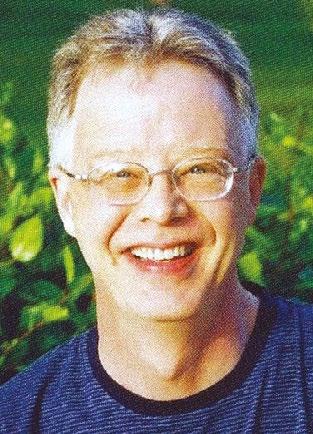
He is remembered as a “brilliant” engineer who worked for companies like Susquehanna Radio and Price Communications, including stations like WOWO and WFMS. Colleagues said he had a native talent for technical matters and influenced the careers of many engineers and air personalities.
Jack Didier, director of engineering at Federated Media, knew Goode since they were in their teens in Indiana.
“If ever there was an individual who transmitted the Butterfly Effect to the world of radio without knowing it, it was Jeff Goode,” he said.
People whose careers Goode influenced include engineers David C. Smith, Matt Kyle, Dan Mettler, Jeff Littlejohn, Kent Kramer, Mogan David, Ed Didier, Burly Stapley and Greg Trobridge, as well as numerous air talent.
He started learning engineering from Bill Ryan and Steve Hnat (later of Hnat Hindes). Didier and Goode started Broadcast Circuit Systems in 1983, building mic processors and doing contract work.
Max Turner worked with Goode for years at Susquehanna Radio, where Turner was a regional engineering manager and where Goode rose to become a chief. He called Goode “brilliant beyond belief.”
The online version of this story has more details; at http://radioworld.com, search Jeff Goode.
Five challenges for smalland medium-market radio

To
stand out in the media kaleidoscope, Zimmer says super-serving localism is key
Paul McLane Editor in ChiefJohn Zimmer is owner/ president of Zimmer Communications, serving Columbia, Jefferson City and Springfield, Mo. He is also a vice chair of the NAB Radio Board. He answered our questions via email.
Heading into the NAB Show, what do you consider to be the most important issue or challenge for radio broadcast owners and executives right now?
John Zimmer: Speaking for small and medium radio markets, in my opinion, the big challenges are:
1. Revenue growth. Where will it come from? With declining
national dollars, loss of retail base, consolidation of automotive dealers and a shift to online sales from brick-and-mortar stores.
2. Audience growth — Evolving to meet the growing demand for streaming listenership and at same time maintaining our broadcasting presence in the automobile dashboard, especially in the emerging electric vehicles.
I find it both peculiar and perplexing that Elon Musk (whom I am great fan of) can build rockets, send into space and land them, but his brilliant team of engineers can’t figure out how to give consumers/ customers an AM radio that is free of interference in a Tesla — mindboggling, and it doesn’t pass
the smell test, especially when there is still a huge audience that tunes in weekly (90%) to broadcast radio.
3. Burdensome radio regulations! For example: Ever since Al Gore created the internet, it has transformed the media marketplace, yet radio broadcasters are still subject to outdated rules restricting the number and type of outlets they may own. We need to modernize the rules to reflect the realities of the local marketplace and account for the rise, and increasing influence, of digital media.
Congress recognized this in the 1996 Telecommunications Act by requiring the Federal Communications Commission to
Photo: Tara Moore/Getty Imagesreview its broadcast ownership rules every four years and to repeal or modify those no longer necessary in the public interest as the result of competition.
4. Recruiting and retaining top talent and human resources in all facets of local broadcast and media organization.
5. Lastly, access to capital for small and medium broadcasters to invest in new innovations and products to service the audiences and advertisers in their local communities or acquisitions.
What technologies or new media platforms are you watching closely for their potential impact on how radio organizations do business?
Zimmer: For local communityoriented broadcasters in small and medium markets, it seems that video and podcasting are two growth areas, especially video for high school sports.
This will be a decision for each company to determine their strategies for audience and revenue growth.
Are you a pureplay audio company or evolving into a local media company with audio and video media solutions? Or will it be a different path? It’s
About
Zimmer
Zimmer Communications is a local media and marketing company “built on the trust and credibility of local broadcasting community service.” It’s a family-owned firm with 13 Missouri radio stations, three magazine publications, and departments including digital, social, web design, audio, video, photography, voicework and graphic design.
exciting for independent owners to have the ability to experiment and not have one solution for the entire country. However, the challenge as independent owner/operators is that we don’t have the size or scalability of digital companies or big public radio companies, like NPR and iHeart, to get the same ROI off some of these investments.
Keep an eye and ear on new innovations that are encroaching on what franchises broadcasters thought they owned. For example, it’s a small thing, but this week I installed a new Ring Doorbell at my home and this week I started receiving local weather notifications from Ring Doorbell. Yikes!
Also, a bigger threat is how Spotify has begun evolving their strategies and investing heavily in content creation. They will own their own distribution platform and the content for their platform, without the burdensome regulations that broadcasters face, and with the scalability advantage of leveraging their digital investments globally versus local pureplay local broadcasters serving a local market.
Over the next three years, what will be the most important change or evolution in how radio companies are run?
Zimmer: The marketplace has changed significantly with regards to media consumption, especially among the big-tech streaming players, and public and advertising dollar placement. I think that for the independent owner/operator, our only option for growth is to super-serve our local communities with hyper-local and free content over our airwaves, as we continue to improve our marketing toolbox of solutions to help clients get better results with their advertising investments. And/ or invest in different business segments
or create partnerships with local businesses within our local markets.
What else will you be watching for at NAB or what else should radio managers be thinking about?
Zimmer: One thing I love is the face-to-face networking with other successful broadcasters and to learn from them. The NAB Show is great for that. Also, I love to look for solutions that can help our associates do their jobs quicker, better, faster to serve our audiences and advertisers.
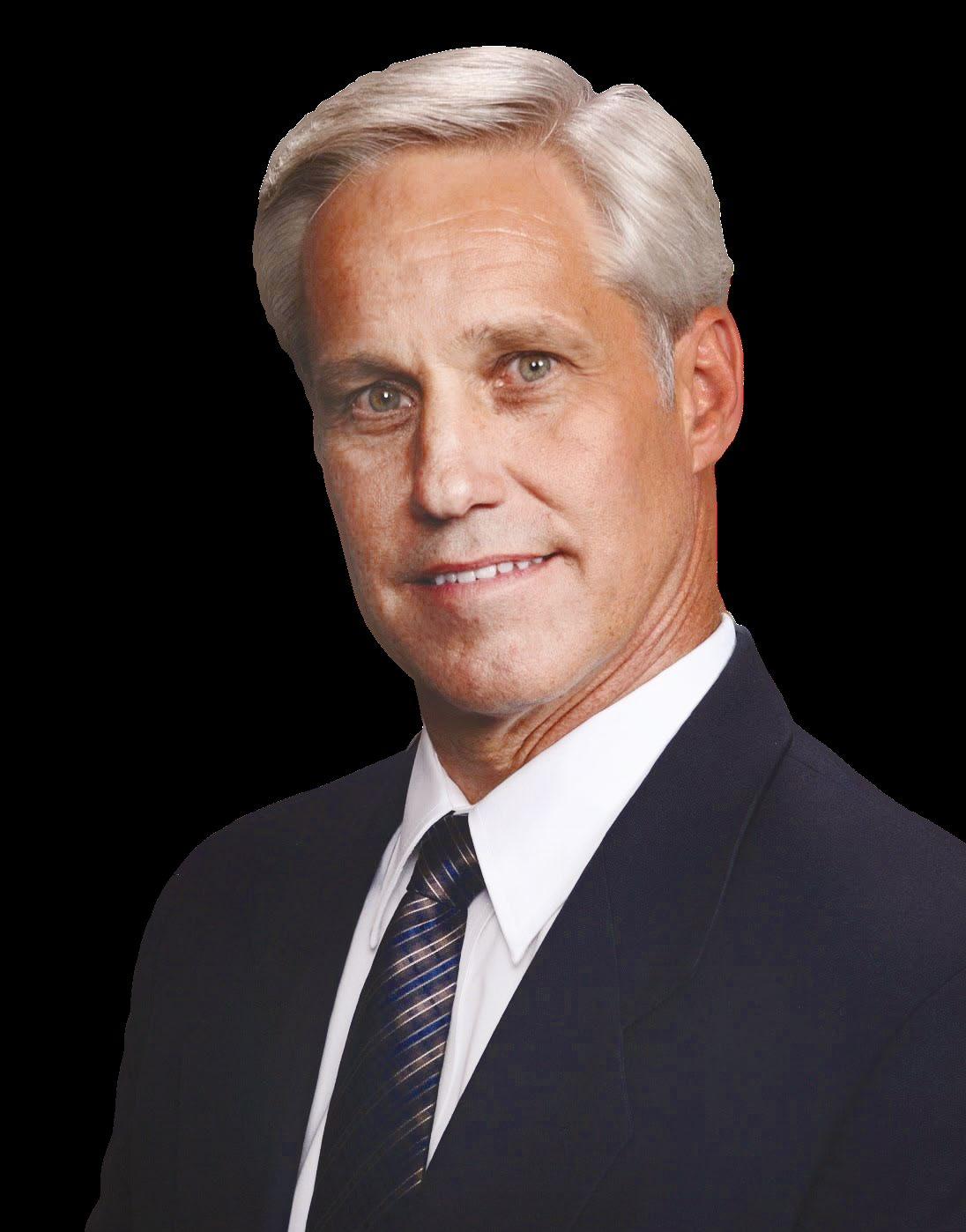
Additionally, of course, the NAB is a great place to spend quality time with your engineer or IT person(s) and see the show through their eyes.
But the biggest thing for radio broadcasters is to attend and participate in our industry events. To me the knowledge and insights, the old friends you see or the new ones you make, are key to growth. It is a great place to work ON your business instead of IN your business. Your company will be better for it. And if you can’t attend, send someone from your staff.
“Are you a pureplay audio company or evolving into a local media company with audio and video media solutions? Or will it be a different path?”
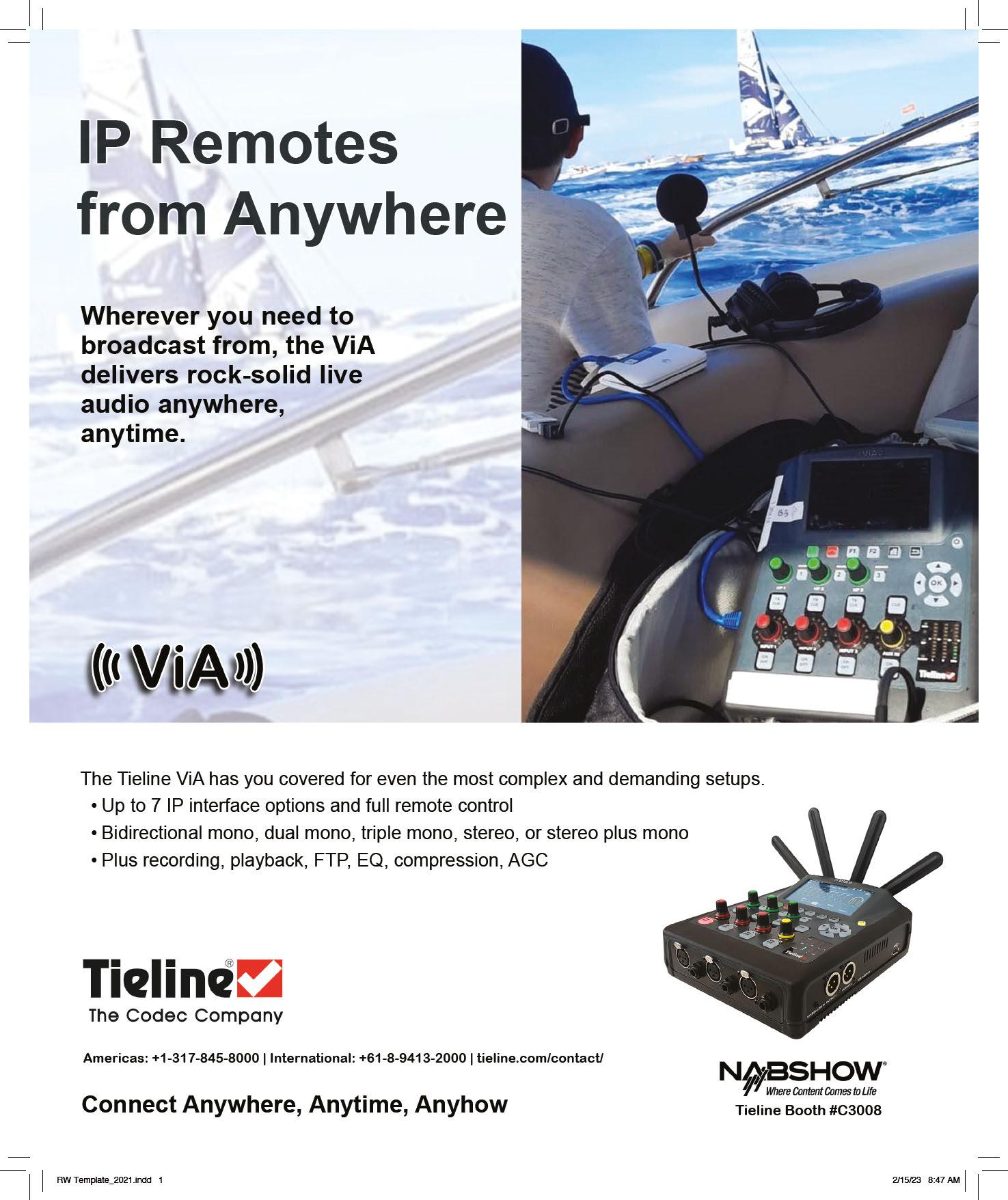
Synthetic media grabs attention as NAB Show approaches
Developments in AI will join traditional concerns like how to grow revenue
What topics will be on the minds of radio managers at the upcoming NAB Show?
It seems certain that artificial intelligence will be among them.
Most of us probably had never heard terms like OpenAI, GPT or generative AI until a couple of months ago, when awareness of tools like ChatGPT exploded. Radio industry discussion has focused on the many ways AI tools might make radio workflows more efficient — or take away jobs.
The exhibits and suites are likely to provide more grist for those discussions.
For example Futuri, which will have a suite at the show, has launched RadioGPT, calling it “the world’s first AIdriven localized radio content solution.” It combines GPT-3 technology with Futuri’s AI-based story discovery and social content system, TopicPulse, along with AI voice tech. The service can scan social media and other sources of information to identify topics that are trending in a given market; then it uses AI to create a script for on-air use, and AI voices turn that script into audio.

Futuri CEO Daniel Anstandig said, “The ability for broadcasters to use RadioGPT to localize their on-air content in a turnkey fashion opens up resources for them to deepen their important home-field advantages in new and unique ways. … With RadioGPT, there should never be a ‘liner card’ or ‘sweeper-only’ air shift again. Now everyone can be live and local.”
Among companies trying it out in beta form are Alpha Media in the United States and Rogers Sports & Media in Canada.
Veritone, an exhibitor whose products deploy artificial intelligence, has taken a growing profile with media companies like iHeartMedia, Audacy and ESPN. Sean King, Veritone’s SVP and general manager, commercial enterprise, will have his eye on more collaboration and partnerships at the show.
“Radio managers, specifically, need to be thinking about which technologies to embrace and lean into, whether that’s synthetic media or automation tools to ensure their organizations are around for the next NAB,” he said.
“Everyone in this space needs to learn not only how to keep up with content demands and new platforms but how to reach new audiences while remaining authentic to their programs’ values and brand. Also, it’s critical they do this in a way that boosts their revenue because, at the end of the day, every business is trying to evolve and grow.”
Photo by Jim Peck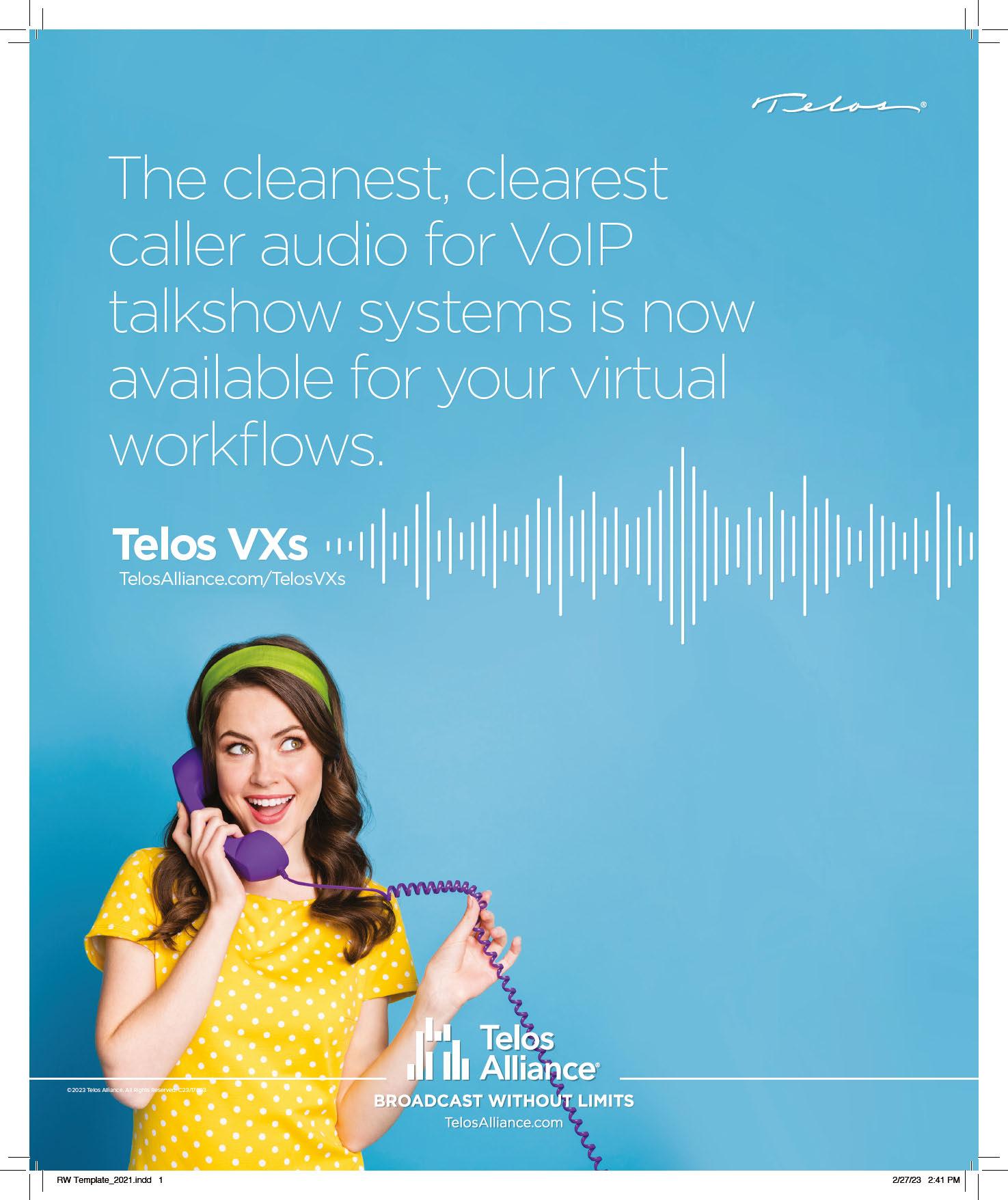
We asked King if people who value their jobs in radio should be frightened by artificial intelligence, synthesized voice and the industry’s general trends toward streamlining and centralization.
“I think about farming. Advances in equipment didn’t put farmers out of business, it made them more efficient. Now, many successful farms utilize AI to analyze weather patterns, make predictions and optimize their crop growth,” King said.
“AI provides great insight to those in (and outside of) the radio industry. Take attribution and proof of performance, for example. Without real data, stations and advertisers are merely guessing at what’s working. Without AI, it can take a long time to sift through content archives to find a needed clip. With AI, it can be done in mere seconds.”
King said that synthetic voice, also known as AI voice, gives content creators, including radio hosts and broadcasters, the ability to create content such as liners, promos, news and weather alerts and more without the need to go into the studio to record each one.
“This allows their voice to be in two or more places at once. Additionally, they can do this in multiple languages, offering greater accessibility and inclusion for their content as well as open up new markets and diversify their revenue streams.”
A demand for on-demand
What about important issues beyond AI?
Steven Goldstein is founder and CEO of Amplifi Media, which advises companies on podcasting strategy, content development, audience retention and organizational design.

From his perspective heading into convention season, Cumulative Audience for radio is holding up pretty well, “but the underlying issues of eroding Time Spent Listening and the serious drop in Persons Using Measured Media over the years has to be more on the radar. Ondemand is going to be critical part of many radio stations’ futures.”
Just as the video business has been forever changed by ondemand streaming of shows, he said, the same future holds true for audio.
“People expect to play content at a time convenient for them. That’s why podcasting has to be on the list for spoken word shows and
stations.”
Emily Lindner is founder and president of TruNorth, which helps CFOs and CTOs manage their assets and expenses. For her the most important trend and challenge for radio is the exponentially increasing rate of innovation, from production to consumption.

“This industry’s status quo has clearly been disrupted, and many firms are firmly rooted in the way things were,” she said. “The agility needed to seize the moment, if not create the moment, requires confidence, capital and culture. Covid and declining revenues have folks playing it safe, which is the death of creation.”
Major cap-ex investments with three years left on the books now are considered “end of life,” viewed as “anchors blocking agility,” she said. Enterprise software assets chosen a decade ago yet fully implemented only recently are being bested by low-code, no-code SaaS apps.
Lindner calls 2023 “a meteor shower of better-fastercheaper solutions. Creating a culture of innovation is a must to stay relevant and profitable.”
She expects that radio will see more consolidation and automation, “sad for some but exciting for others,” and that a focus on operational efficiencies will be important. “This is the time to consistently ask your people, competitors and partners: Is there a better way to do this or that function?”
Radio, Lindner concluded, has excelled at creative genius, with the best, brightest and zaniest concepts thrilling advertisers and listeners. “Leveraging the capital from these established assets and revenue streams to drive confidence and lead from the front is paramount. I’ll never forget hearing Caroline Beasley talk about the future of e-sports five years ago. It seemed like a mirage. Why? In 2023, I get it.”
Above Emily Lindner of TruNorth“
Everyone in this space needs to learn not only how to keep up with content demands and new platforms but how to reach new audiences while remaining authentic to their programs’ values and brand.
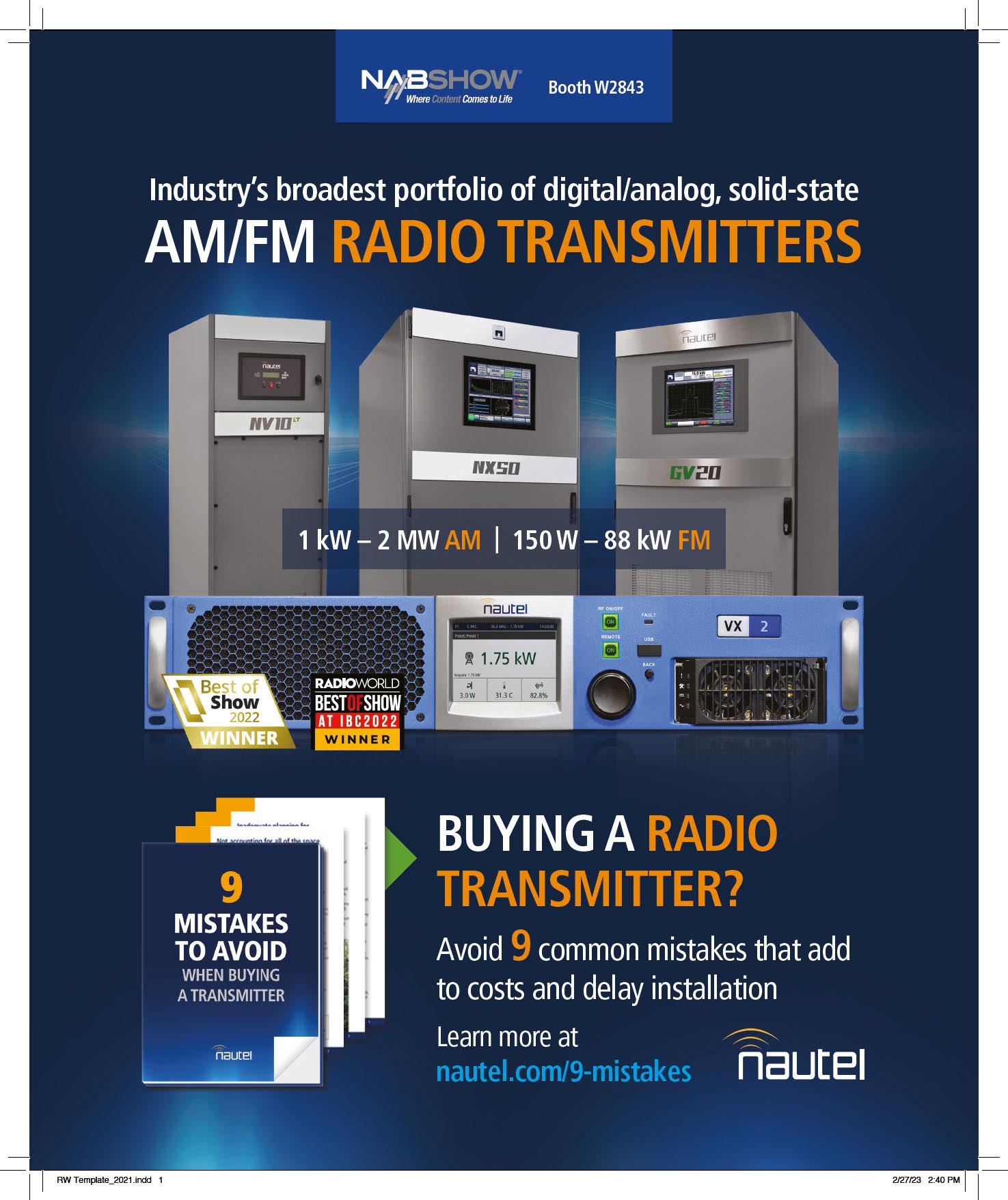
Broadcast District
The NAB Show and the National Association of Broadcasters itself are both celebrating their centennials. NAB has a website called “Celebrating 100 Years,” providing an interactive journey through its history and evolution. The association also is accepting stories from people about their own broadcast and convention memories.
If you do go to the show, get ready to spend a lot of time over at the West Hall.
The organizers announced this winter that a new “Broadcast District” will include not only many of the exhibitors relevant to radio and TV, but also the Broadcast Engineering and IT Conference sessions. West Hall will also host the Small- and Medium-Market Radio Forum; the NAB Diversity Symposium; and the NAB Leadership Foundation’s Focus on Leadership Speaker Series.
Further, on three days of the show, there will be a “TV and Radio HQ” in West Hall, which will include the NAB Member Lounge, a “Sip-and-Speak Series” of brief Q&As with industry experts; a “Discussion Den” that promises “deep-dive discussions and workshops” for broadcasters; happy hours and other activities.
An NAB official told Radio World that all of the shuttle routes will be the same. “The only thing that will be changing slightly for shuttles is that during the morning, they will be dropping off at West Hall first, to encourage attendees to use the West Hall registration area.”
This shifts the center of gravity for broadcasters at the event. The 2022 NAB Show was the first where the billiondollar, 1.4 million-square-foot West Hall was open for business. If this year’s show follows the pattern set by CES in January, a lot more people will be getting their first look at the new hall in 2023.
Among other highlights for radio:
Several presentations will help broadcasters who are interested in creating video on a tight budget, including
streaming high school sports.
A Sunday session called “Radio Works — Positioning Radio in 2023” is sponsored by the Radio Advertising Bureau and will feature speakers from Westwood One/Cumulus Media, Zimmer Radio & Marketing Group and Cox Media Group.

On Monday, the annual “Ask the FCC” session will give broadcasters a chance to ask questions of commission staff. Also that day, Adrian “Stretch Armstrong” Bartos and Bobbito García will be inducted into the NAB Broadcasting Hall of Fame. They made their names in the 1990s hosting the “Stretch Armstrong and Bobbito Show” at Columbia University’s WKCR(FM) and are considered key figures in the evolution of hip-hop on radio.
And the convention organizers also have launched an Excellence in Sustainability Awards program to “recognize individuals, companies and products for outstanding innovations in media technology that promote conservation and reusability of natural resources and foster economic and social development.”
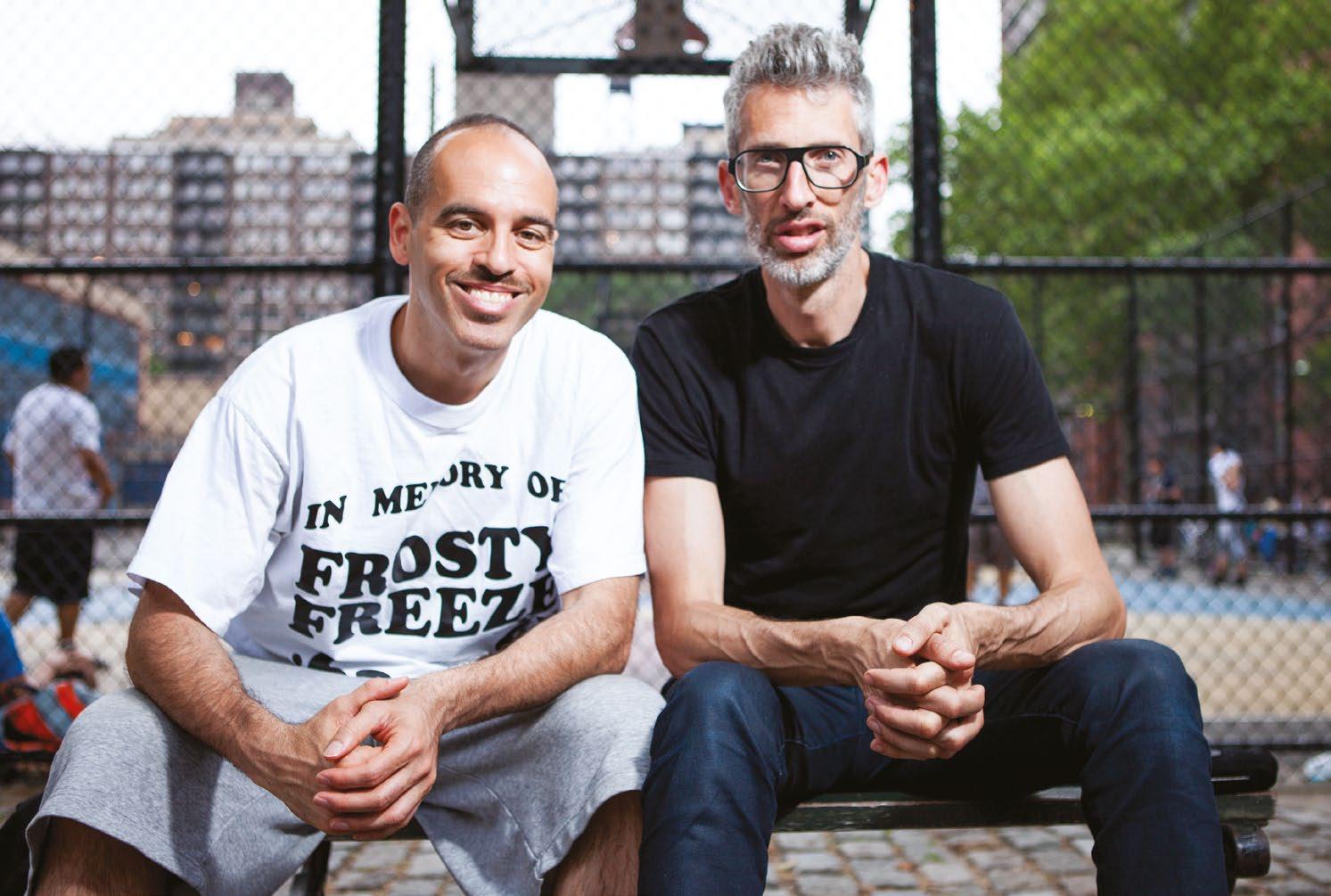 Above left Steve Goldstein of Amplifi Media
Above right Bobbito García and Adrian “Stretch Armstrong” Bartos
Above left Steve Goldstein of Amplifi Media
Above right Bobbito García and Adrian “Stretch Armstrong” Bartos
“I’ll never forget hearing Caroline Beasley talk about the future of e-sports five years ago. It seemed like a mirage.
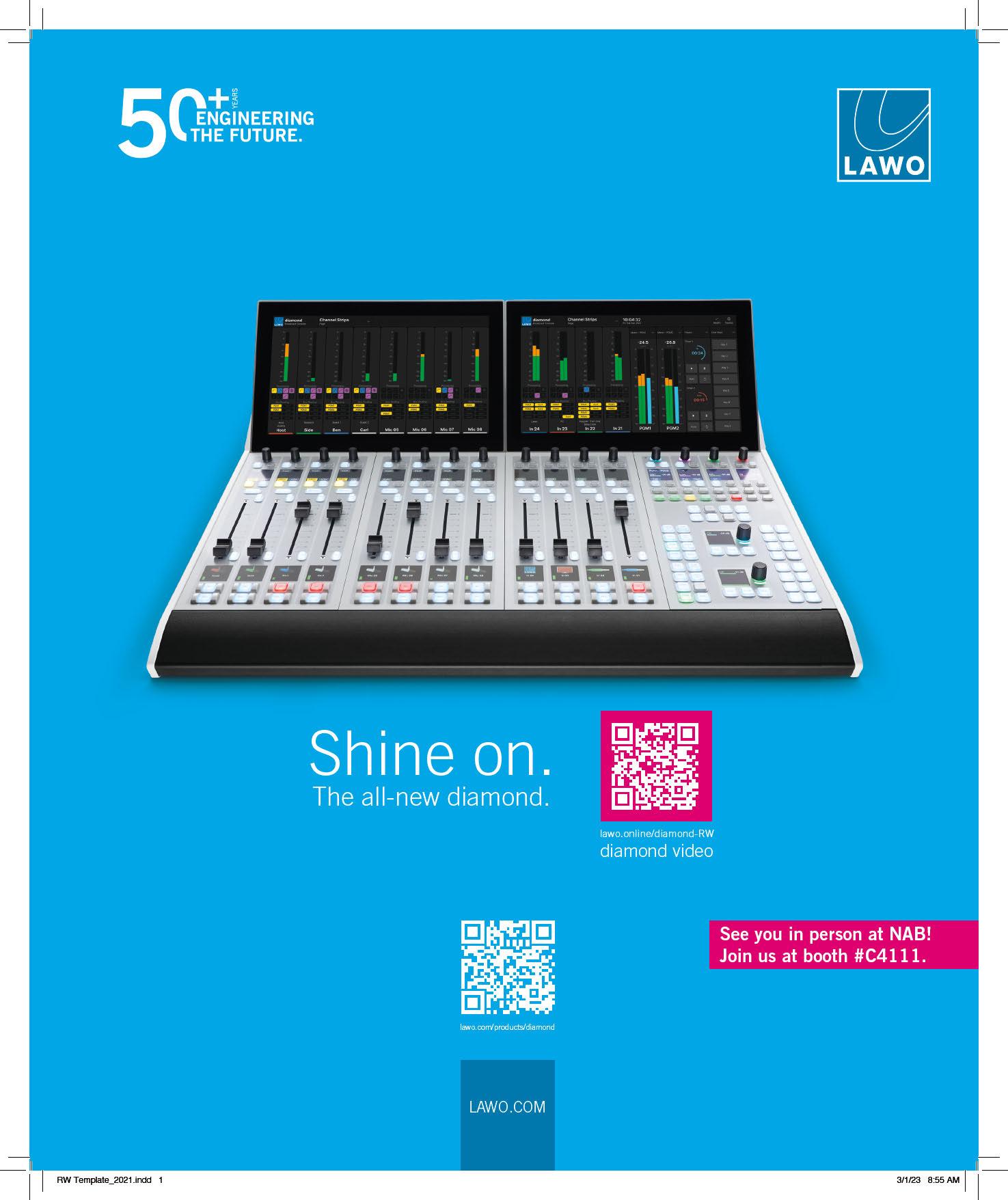
Golden nuggets at your transmitter site
Ben Dawson of Hatfield & Dawson Consulting Engineers saw our mention in the Feb. 15 column of Western Electric 120 “repeat coils.”
Ben has a 1950 Western Electric Telephone Equipment catalogue in his office and says it lists several versions of the coil — numbered 120C, D, E, H, J and K — with various turns ratios and characteristics.
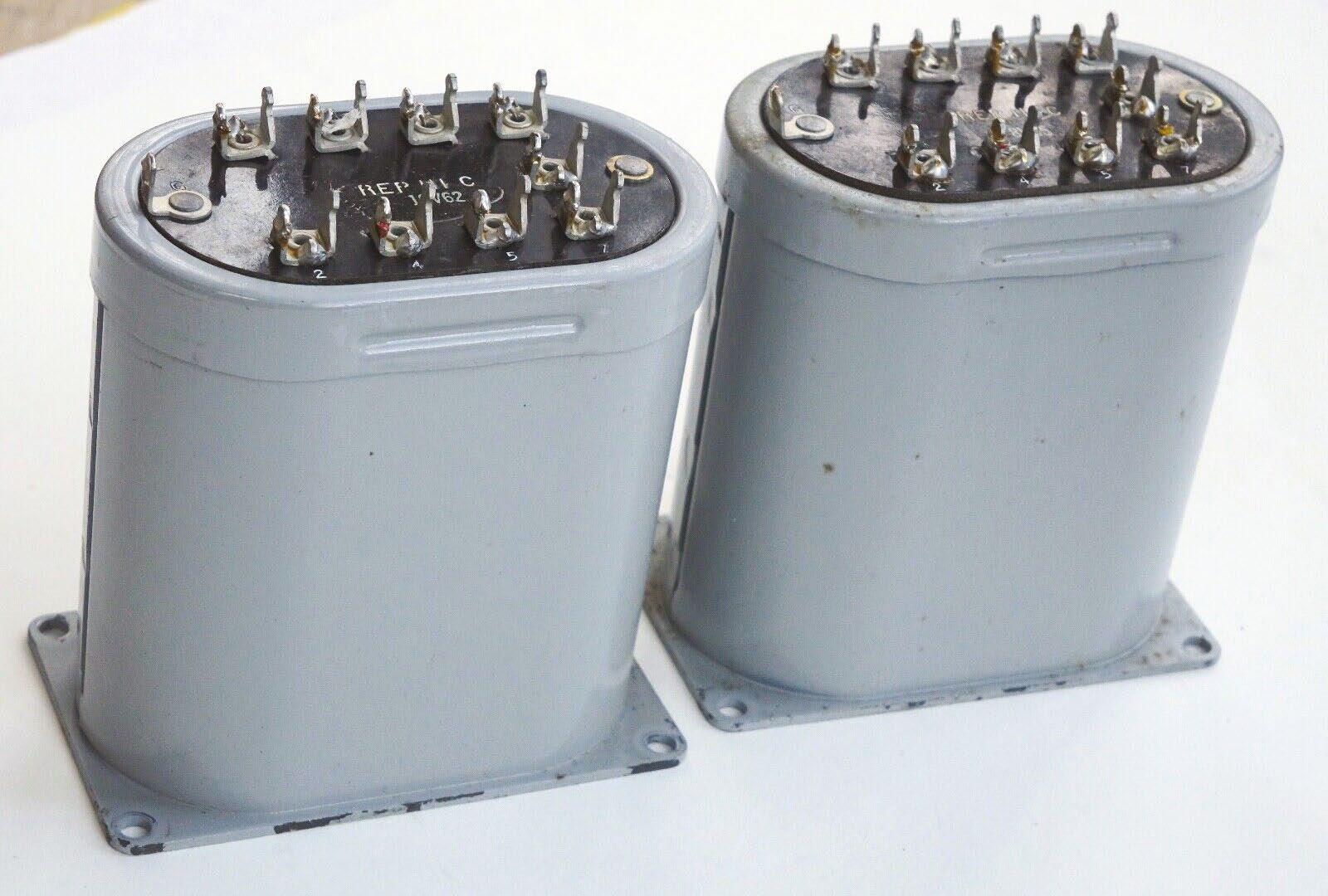
A more common repeat coil, he says, is the truly wonderful 111C. In addition to its amazingly well-balanced pairs of windings and wide frequency response, the 111C has a Faraday shield that might save your bacon when you need to get rid of troublesome common mode signals.
Ben remembers an AM station where an incoming telco program line and solid-state amplifier were picking up FSK telegraph signals from the VLF transmitter at the Jim Creek Naval Radio Station in Washington state. These signals passed
through the AM station’s transmitter as audio and created a spur that interfered with yet another station. But a 111C solved the problem nicely.
The 111C is one of the finest audio transformers ever made, and it was ubiquitous on telco equalized program circuits. So on your next visit to an older transmitter site, take a look in the telco closet or on the wall. You might discover one or more of these golden nuggets. Google the hookup specs to learn more about this audio transformer and its multitude of uses.
BTW, the “Resources” section of the Hatfield & Dawson website contains more than 50 articles and downloads on topics that will appeal to both radio and television broadcast engineers. Visit www.hatdaw.com.

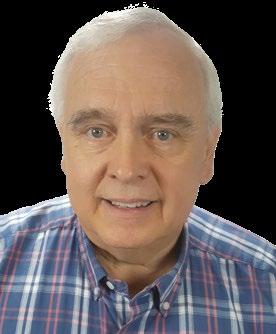
A good Monday morning habit
From Larry Wilkins’ Monday Morning Coffee and Technical Notes (a service of the Alabama Broadcasters Association) comes an important reminder that your station’s chief
operator is required, on a weekly basis, to review the previous week’s station logs, to ensure compliance with the FCC rules.
This review includes all EAS activity, tower light inspections and tower light issues, and any major transmission system disruptions or calibrations. After the review, the chief operator is required to sign and date the logs, indicating that they’ve been reviewed.
Larry has posted a help sheet for understanding the requirements of a chief operator. Find it at tinyurl.com/ rw-chiefop.
Caveat emptor
Our Radio World colleague Dan Slentz reminds us that if a price seems too good to be true, be suspicious. Dan recently came across a knockoff of the fine Sennheiser MKH 416 short shotgun mic. The copy looked the same, but that’s where the similarity ended.
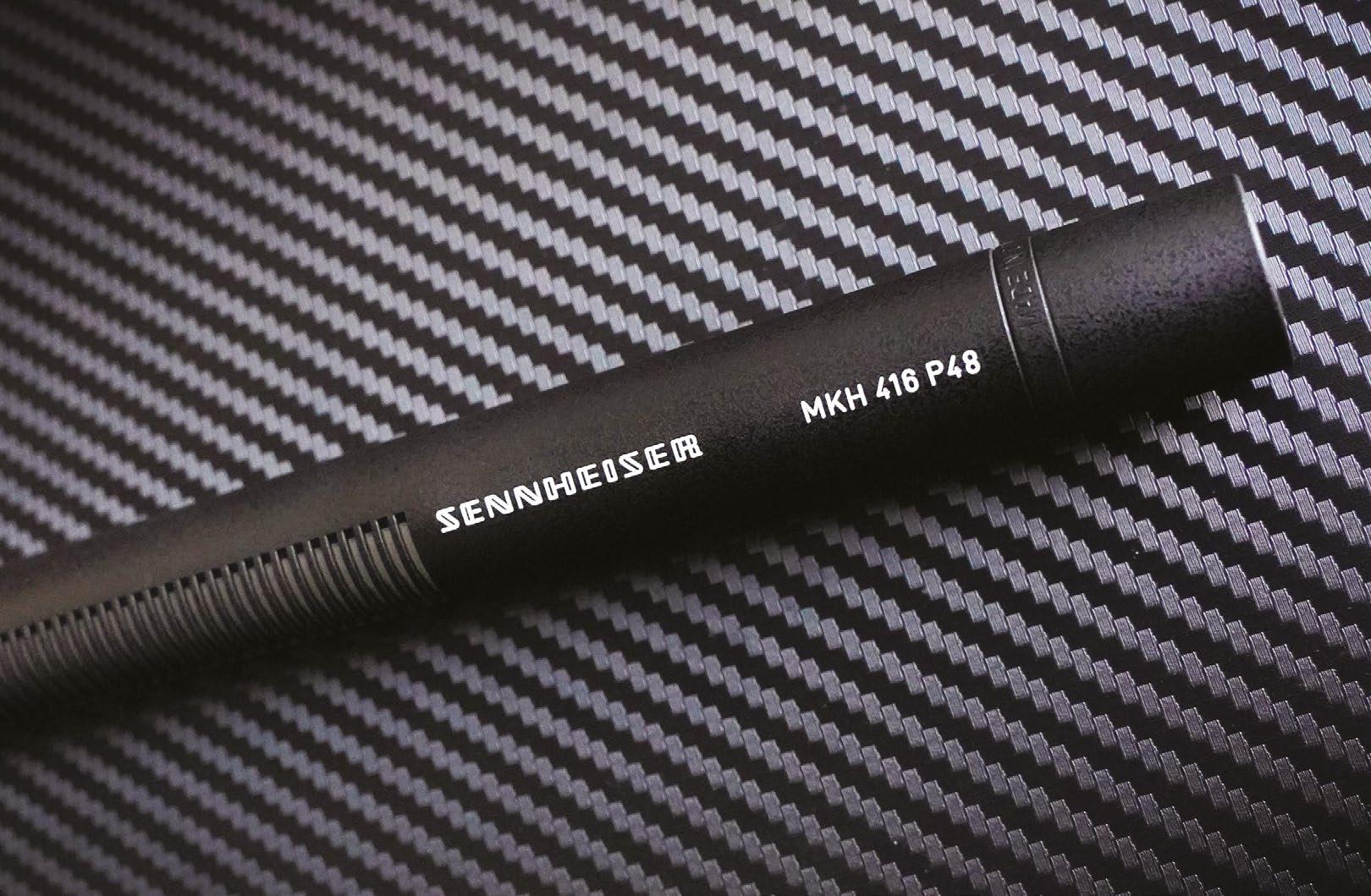
That’s not to say that some offshore microphones aren’t worth the investment. My colleague Kirk Harnack recently picked up a very good offshore condenser model for under $50. But be careful. The saying “Buyer Beware” might be timeworn but endures for a reason. Be cautious before parting with your hard-earned money.
Sorry Roy
Much as I try to be accurate in writing this column, mistakes do occur; and in our March 1 article, I mistyped Roy Becker’s last name. (He’s senior broadcast engineer at the Bible Broadcasting Network.)
Nothing like having your name show up in print only to see it misspelled. Apologies, Roy, we’ll get the online version corrected! Just call me John Bassett!
The show must go on
Writing about 111C coils and microphones reminds me of remotes and what can go wrong on them. Murphy’s Law makes no exception for these staples of radio life; any engineer who has done one knows what I’m talking about.
Which reminds me that years ago, a fellow I’d worked with in Washington, D.C., was hired away to handle middays at a top station in L.A. He later told me that Tim Conway would visit the station frequently. The entertainer liked radio and enjoyed the station’s format, so he’d just drop by. He was unassuming, a really nice guy. He’d even help put carts away.
With that as background, go to YouTube and search “Tim Conway vs. Worst Mic Ever” to discover how one audio engineer heroically helped out when the comedian was having trouble with his audio equipment.
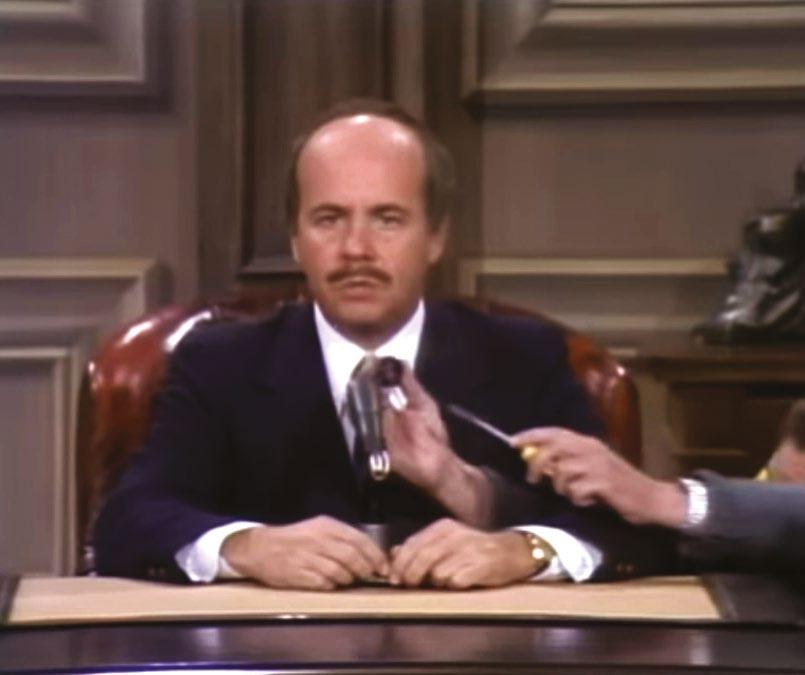
“
The 111C is one of the finest audio transformers ever made, and it was ubiquitous on telco equalized program circuits. ”
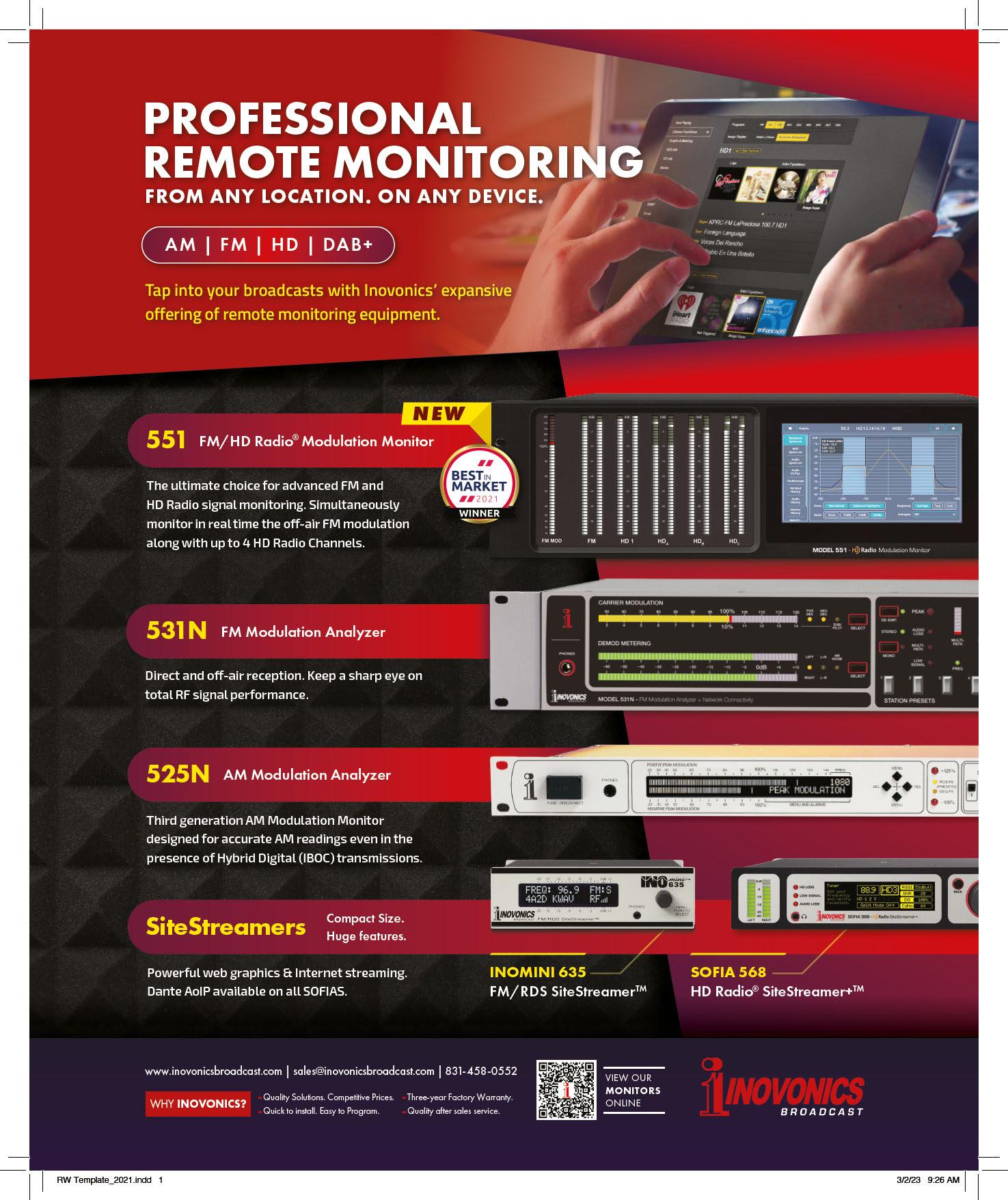
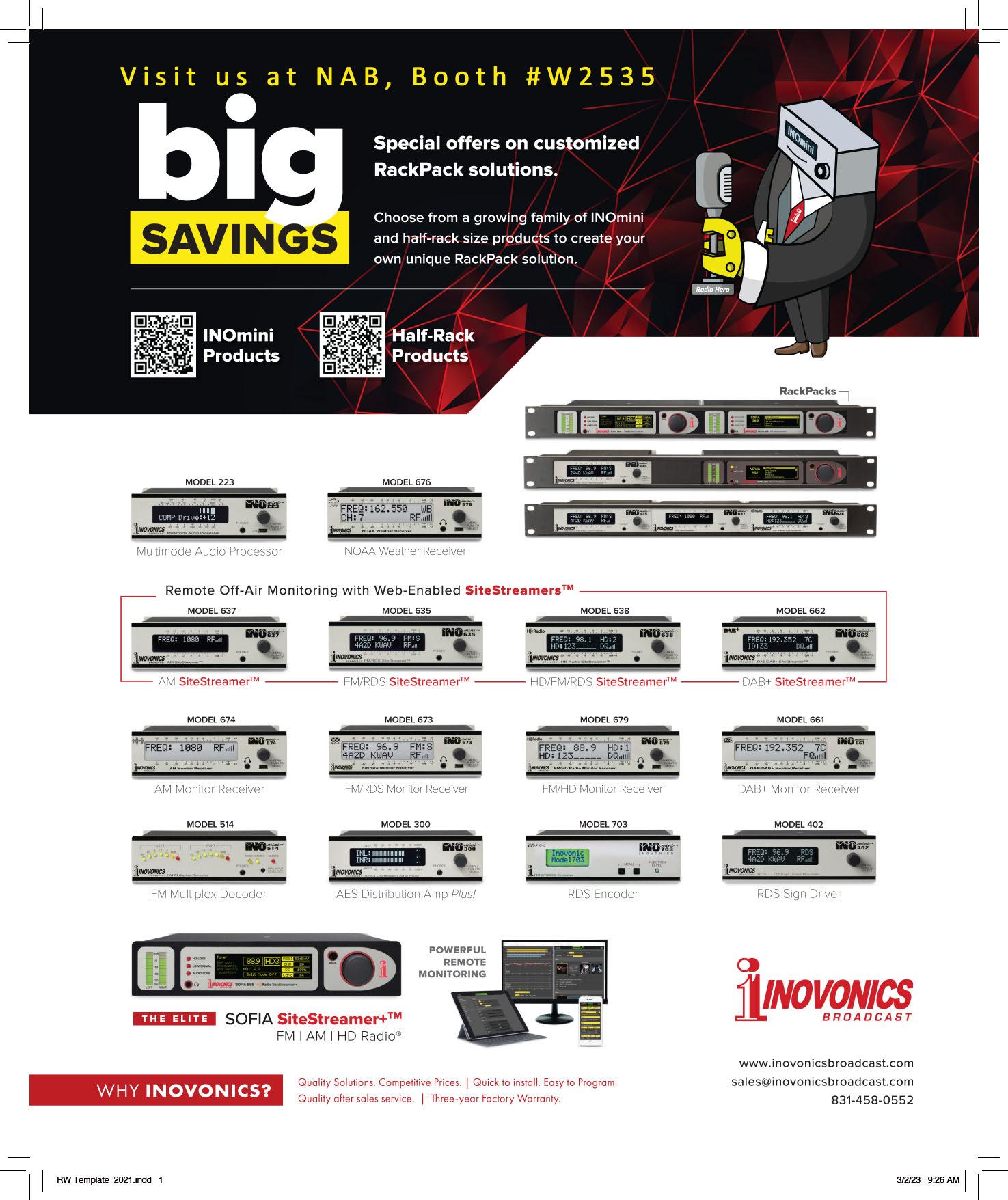
Cloud brings simplified workflows, cautious expansion
At Northwestern Media, Murphey preaches redundancy in network infrastructure
Arecent Radio World ebook explored the state of cloudand IP-based content creation and delivery.
Derek Murphey, CBRE, CBT, is network production software manager at Northwestern Media.
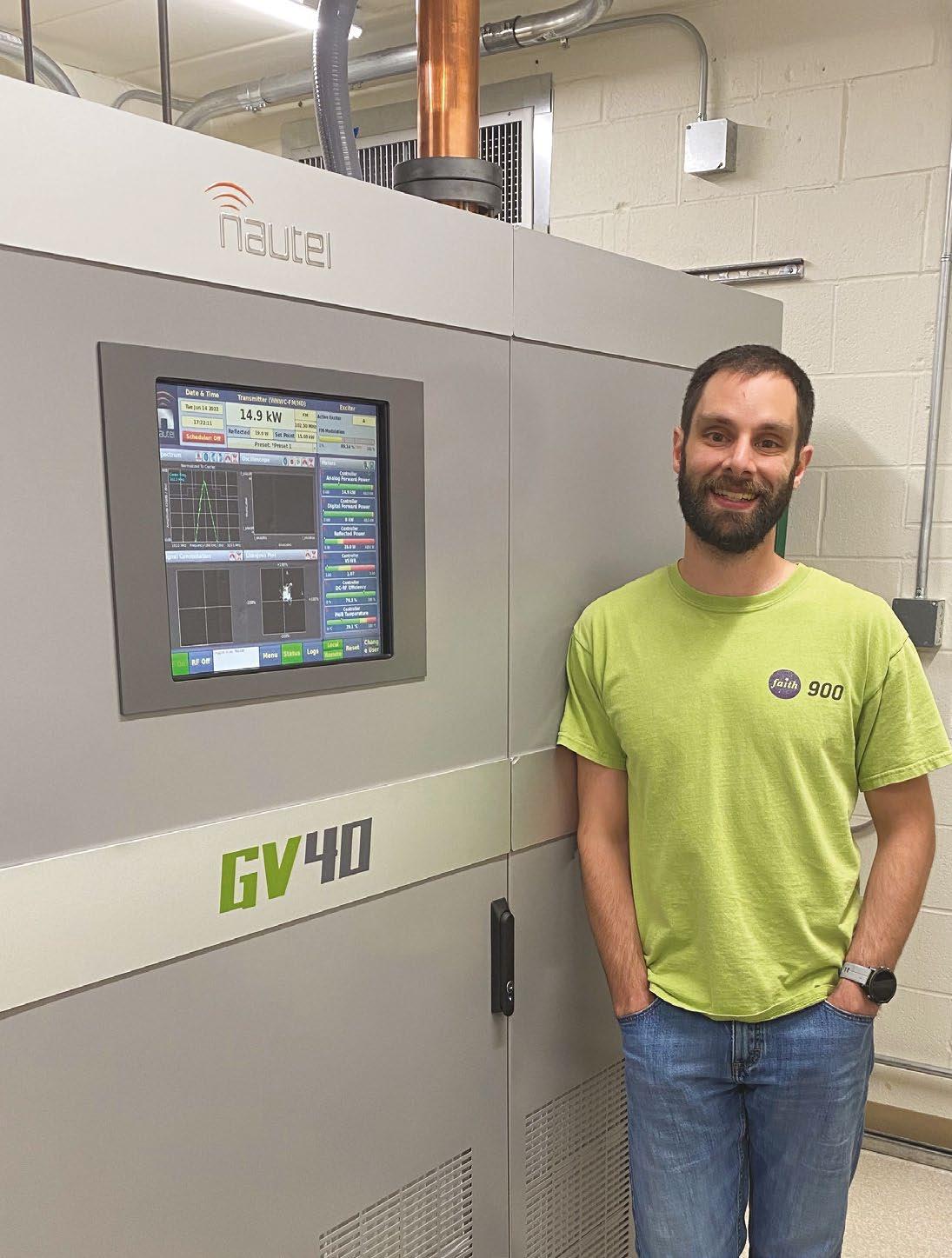
From your experience, is the cloud being used in radio largely for front-office functions?
Derek Murphey: Cloud-based products find the most use for front-office workflow as well as post-production. I’m sure everyone is using some cloudbased file storage/transfer system these days, and while that is very efficient for the office functions, it has also greatly simplified the production workflow. Cloud systems are used extensively for system backups and file storage, sometimes without the end user even realizing.
To what extent has content creation and delivery been deployed, and what’s the most important thing that broadcasters should know about it as we move into 2023?
Murphey: Cloud-based content creation has taken up more of the broadcast workflow than delivery systems. Some of that is due to vendors choosing to “retire” our go-to local file store/edit systems, favoring cloud-based subscription software and file management. I think the delivery side of cloud software still makes broadcasters nervous, depending 100% on a network connection to stay on the air. Going into 2023 I hope broadcasters will continue to explore cloud programming and the automation products available, and find ways to build redundancy into their network infrastructure.
What products for broadcast purposes do you use that are based partly or entirely in the cloud?
Murphey: We’re currently utilizing RCS Zetta Cloud as part of our DR solution, and everyday office/file sharing is exclusively Microsoft 365/OneDrive.
What can cloud system users do to maximize their network reliability and availability?
Murphey: Redundancy. It all comes down to having standby equipment hot and ready to go the moment there is a sign of trouble. Especially when utilizing cloud systems for real-time audio, it’s critical to have multiple ISPs feeding redundant firewall, router and switch hardware. It’s critical to evaluate your delivery system, identify the single points of failure and find a way to add redundancy, or at the very least have a written plan in place to get back on the air in the event of failure.
What provisions should they make for local alternate capacity?
Murphey: Local copies and backups are very handy to have in the event of cyberattack or a more catastrophic scenario where ISP and/or utility grid is compromised. Planning to maintain a second copy of your most critical data can be the difference of staying on the air while your competitors are forced off.
Will the expansion of fiber and 5G, and the ability to transport full linear audio with little delay, influence the role of the cloud?
Murphey: Absolutely. The constant battle for real-time networked audio is always jitter and latency. Whether it’s all in-house, across a VPN, or cloud-based over public internet. Assuming MOST cloud-based audio systems have a buffer or error correcting mechanism, the lower latency of fiber would allow the same transport reliability while reducing the amount of duplicate data being sent, lowering the overall bandwidth needed.
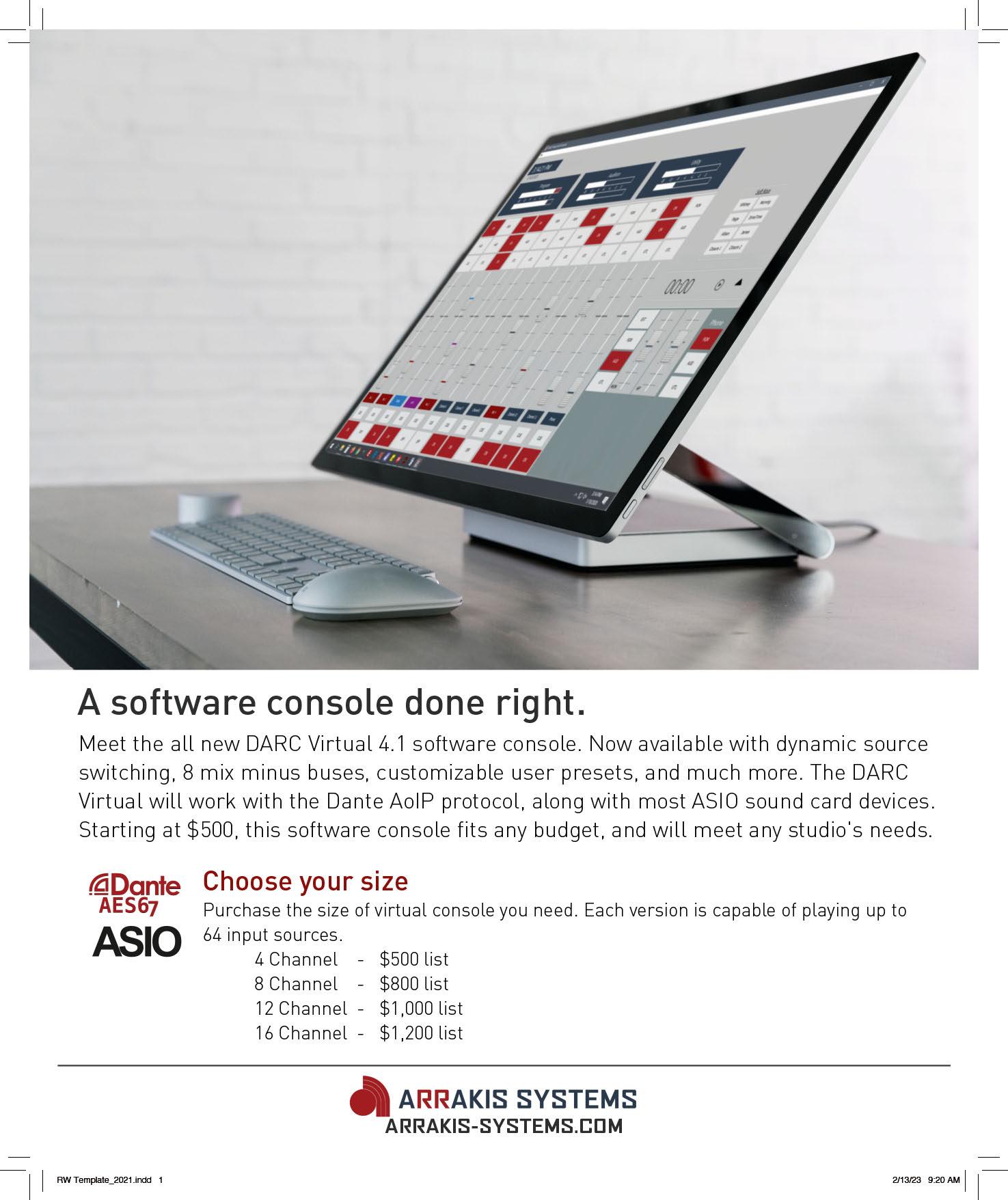


Conversant AI redefines audio exploration
esearch shows consumer enthusiasm for using home smart speakers has tempered as that space matures; according to recent data 41% of U.S. households already own a smart speaker.
But the integration of voice assistants into automobiles is opening new avenues for how drivers and passengers interact with the dashboard.
On-demand voice assistants like Google Voice, Siri, Alexa and Samsung’s Bixby enable users to communicate directly by voice to connect to their favorite audio services, including audio streams, podcasts and live radio at home or in the car. At a basic level, a voice assistant replaces or supplements a visual interface and leverages the available data.

This winter’s CES show put a razor focus on voice solutions and their exceptional

compatibility with the infotainment-rich in-cabin experience the connected car is delivering. It’s a voice revolution in the car, according to industry observers.

Auto manufacturers and tech developers are unveiling hyper screens in the dash with multi-faceted entertainment packages that can offer hands-free access to ondemand content.
Consumer adoption of voice bots in the vehicle is accelerating, and there are lots of options.
BMW introduced its new AI voice assistant, named Dee, at CES. Mercedes Benz unveiled its new in-car entertainment tech, the semi-autonomous DrivePilot system, which uses voice technology to integrate operating systems with and dashboard control.
Chrysler has been touting its Smart Cockpit infotainment system in its electric vehicles, which includes a virtual personal assistant to “provide personalized recommendations and easier car-to-phone

synchronization.” The infotainment system was developed in collaboration with Foxconn Technology Group, according to a press release from the automaker.
“Collaborative experience”
The integration of voice control for autonomous mobility and infotainment with voice-activated apps is magnifying the importance for radio broadcasters to be watching the space closely.
“Voice assistants will have a major influence on the in-car experience. And it’s all about access. Using voice in the car is only natural,” said Roger Lanctot, director, automotive connected mobility for TechInsights.
Many auto makers are using Cerence’s solution to create dedicated/branded voice assistants, Lanctot said, for everything from accessing radio stations to operating in-vehicle systems like air conditioning or as digital owner’s manuals.
SoundHound, Inago and SapientX are other names appearing in the voice-based system space, he said.
“Voice in the car is like the car’s search engine — so that means enabling search for things like gas stations and restaurants,” Lanctot said.
“Ultimately voice will allow for greater discoverability of content — types of music, specific artists or tracks, or particular programs or just traffic or weather information — tuned to the vehicle’s location.”
iHeartMedia listed a variety of new affiliations with voice assistant providers this winter. Among them is Cerence, which is being used to deliver “new and innovative paths to access iHeartRadio’s full portfolio of audio content to automakers and their drivers,” according to an iHeartMedia announcement.
“When combined with its industry-leading voice
Above Companies like SoundHound, shown celebrating its listing on NASDAQ, are building businesses around “conversational intelligence.”
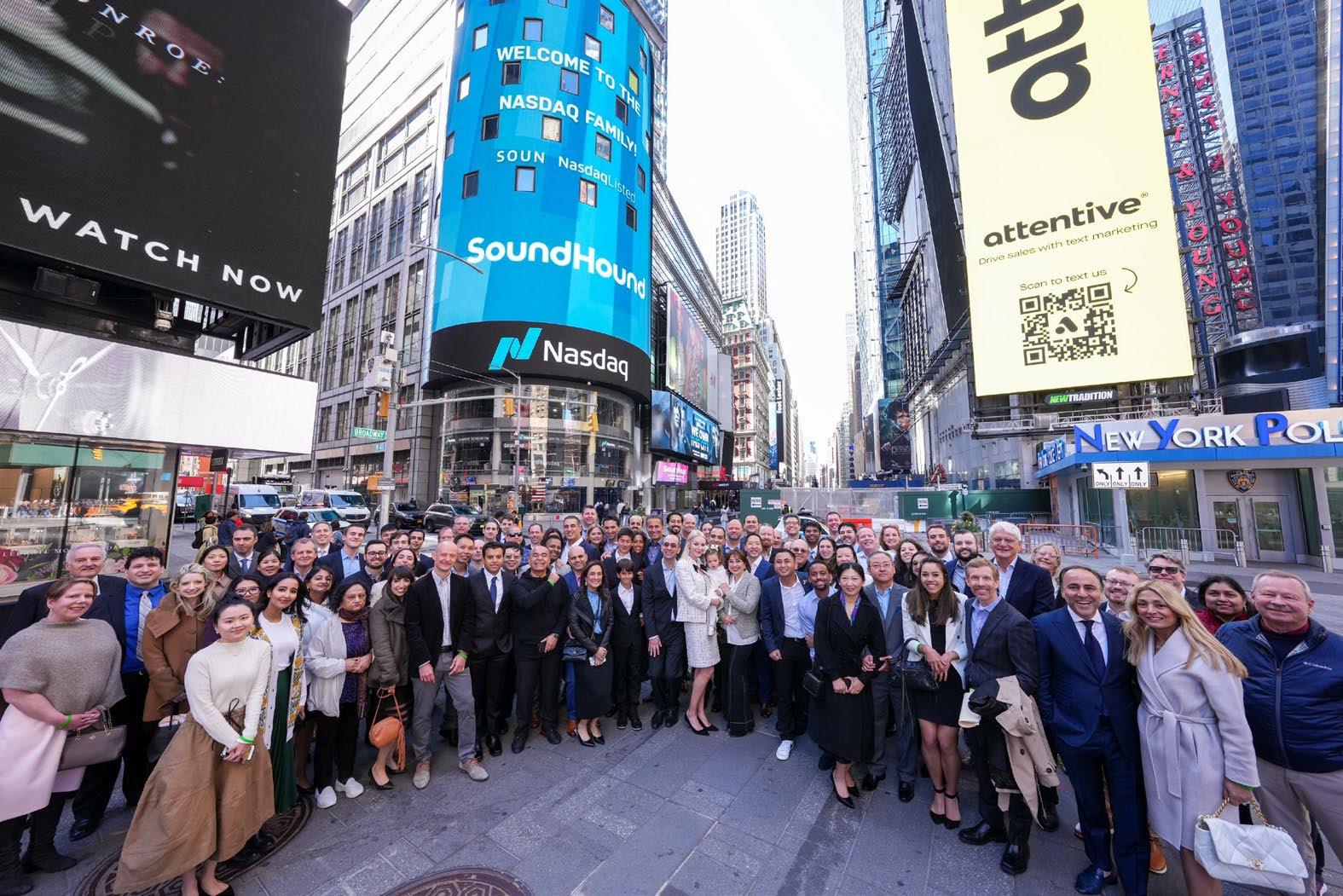
recognition and natural language understanding, Cerence unlocks a seamless iHeartRadio infotainment experience that automakers and mobility OEMs can leverage to delight their drivers across the country.”
iHeart is moving quickly to adopt automotive voice tech that enables a “collaborative experience” in the car, according to the company. Native Voice is another on-demand voice assistant it is using; it enables users to direct connect to content like podcasts and radio station streams. iHeart also highlights a partnership with TomTom and its Digital Cockpit system that integrates iHeartRadio in a car without the user connecting a smartphone to the dashboard.
John Vermeer, executive VP of digital distribution and platform partnerships for iHeartMedia, says voice assistant technology has acted as a gateway to new consumer behaviors and listening occasions for radio, podcasts and music.
“As the efficacy of AI technology continues to improve, new distribution endpoints emerge, and consumers become more comfortable interacting with content providers and brands via voice. We believe we are just getting started,” Vermeer told Radio World in an email.
iHeart is focused on benefitting from any artificial intelligence that can reduce the friction between when a consumer decides to seek out a piece of content and the moment the audio begins, he said.
“We have already been experimenting with voice as a means of allowing consumers to seek out new content and interact with our stations and personalities, but we will continue to test and provide our audiences with new ways to navigate the listening experience across all of our content types,” Vermeer continued.
“We are working closely with numerous partners in
“Voice assistants will have a major influence on the in-car experience. And it’s all about access. Using voice in the car is only natural. ”

the voice space as well as automakers themselves on solutions that are focused on this use case. However, we are increasingly seeing conversant AI become a part of consumers’ daily lives on smartphones, earbuds, smart speakers and other connected devices.”
“The new battleground”
As radio broadcasters brace for the long-term impact of the connected car, they need to sort out their metadata assets from station and program IDs to digital advertising to make it searchable and discoverable via voice technology, according to Fred Jacobs, president of Jacobs Media.
He has used the phrase “Internet of Things at 65 miles per hour” to describe recent dashboard developments.
“Radio station on-air and website promotion for smart speakers has been very effective. The smartest digital assets for broadcasters include voice assistant collaborations. Amazon has worked very hard to get Alexa into cars and so have others,” Jacobs says.
“Consumers like the personalization voice assistants
Lanctot on Voice
Read Roger Lanctot’s commentary“Voice Solutions Can Restore Radio’s Relevance” at tinyurl.com/ rw-lanctot-voice
Joe D’Angelo, SVP of broadcast and digital audio for Xperi, said, “Voice assistants represent a critical technology in today’s media rich connected cars. With more and more choices of platforms and programming, navigating through menus of content in traditional visual formats is not practical or safe during vehicle operation.”
The HD Radio developer works with Tier One suppliers and OEM product developers to ensure that content available via DTS AutoStage is presented in an intuitive and easy-to-discover way, he said. That includes support for the leading consumer and automotive voice interfaces.
Drivers can use DTS AutoStage to “accurately find the desired radio station, show, song or live event” utilizing voice, D’Angelo said.
In addition, Xperi provides an Natural Language Understanding solution with expertise or specialty in media.
“This is extremely important, as media can be referenced in number of ways, and getting to the right program the driver desires is not trivial. We are leveraging years of experience in the video space from our TiVo platforms
offer. In a sense they develop a relationship that learns consumer tastes and preferences.”
He acknowledges that sales of home smart speakers is slowing in the consumer electronics sector, which could be bad news for radio broadcasters, since listening to radio is one of the top uses for home smart speakers. But he says radio is better positioned for success in digital dashboards because of consumer awareness of voice assistants.
“Voice assistant technology is definitely in sync with where the connected car is going. The burgeoning dashboard of new cars is the new battleground for radio to remain relevant, and AI is a big part of it.”
Xperi’s DTS AutoStage, a hybrid radio platform that can switch between over-the-air radio signal to IP stream when out of range, was demoed as part of the Garmin Unified Cabin at CES 2023.
Garmin’s concept, based on the Android Automotive operating system, includes four infotainment touchscreens, an instrument cluster and cabin monitoring system.
to ensure that radio and audio services are as easily discovered and presented to drivers.”
Home smart speakers can now be found in about 50 million U.S. homes. But the proliferation of voice assistant technology does come with privacy concerns for users; and observers say collection data and analytics will be ramped up even more so in connected vehicles. That’s good for businesses that have access to the data, but not so appealing to the users.
In fact, the latest trend in voice solutions is built-in security features that make users feel safer, according to observers. But from tracking apps on smartphones that follow driving habits to the Facebook sharing online shopping preferences, data remains the goldmine for developers.
“Privacy is a fantasy, and most consumers understand that,” one source commented. “Just look at Google. We offer up our privacy every day in order to have great search results. And don’t get me started on Twitter and Instagram. Privacy? In your dreams.”
“
As the efficacy of AI technology continues to improve, new distribution endpoints emerge, and consumers become more comfortable interacting with content providers and brands via voice. We believe we are just getting started.
The USB Gizmo: Set it and forget it
Angry Audio’s device connects transmit and receive line-level audio through RJ-45 to USB
Angry Audio’s line of Gadgets and Gizmos now includes an analog USB interface designed to send and receive line-level, balanced audio.
With this Gizmo, the user can connect a line-level balanced audio feed to the send side, and receive a true line-level balanced audio feed for broadcast or recording. This is a nice upgrade from unbalanced sound cards.

The company notes that unbalanced sound cards and some USB audio devices are prone to ground loop noise caused by lack of electrical isolation between the audio circuitry and the computer. The USB Gizmo is powered by the computer USB port, but regenerates power using isolated DC-to-DC converter circuitry.
The audio circuitry operates with bipolar 15V rails so it is capable of +24 dBu levels. The USB data lines are also fully isolated to prevent another possible path for computer noise to corrupt the audio. The USB Gizmo is a class-compliant device, meaning that it does not require drivers.
With this device, the company says, audio from Windows, MacOS or Linux computers is no longer the weakest link in the audio chain. That gives producers and engineers confidence that the audio product is received into the plant untouched by the whine or buzz of a ground loop.
The USB Gizmo inputs and outputs are on RJ-45 connectors wired in the StudioHub+ format. You can connect directly to nodes, blades and consoles equipped with StudioHub+ connectors, or use StudioHub adapters to accommodate different connector types. XLR adapters are included in the box.
Broadcast and production facilities sometimes need to
process audio from software codecs like Cleanfeed, ipDTL or Skype. For these types of applications, it’s important to create a mix-minus to send back to the caller. You will do this normally with your console and then use that audio to feed the input of the USB Gizmo.
The Gizmo passes and transmits stereo audio. If a situation requires a mono balanced mix-minus feed (for instance, an ad hoc remote using an aux send
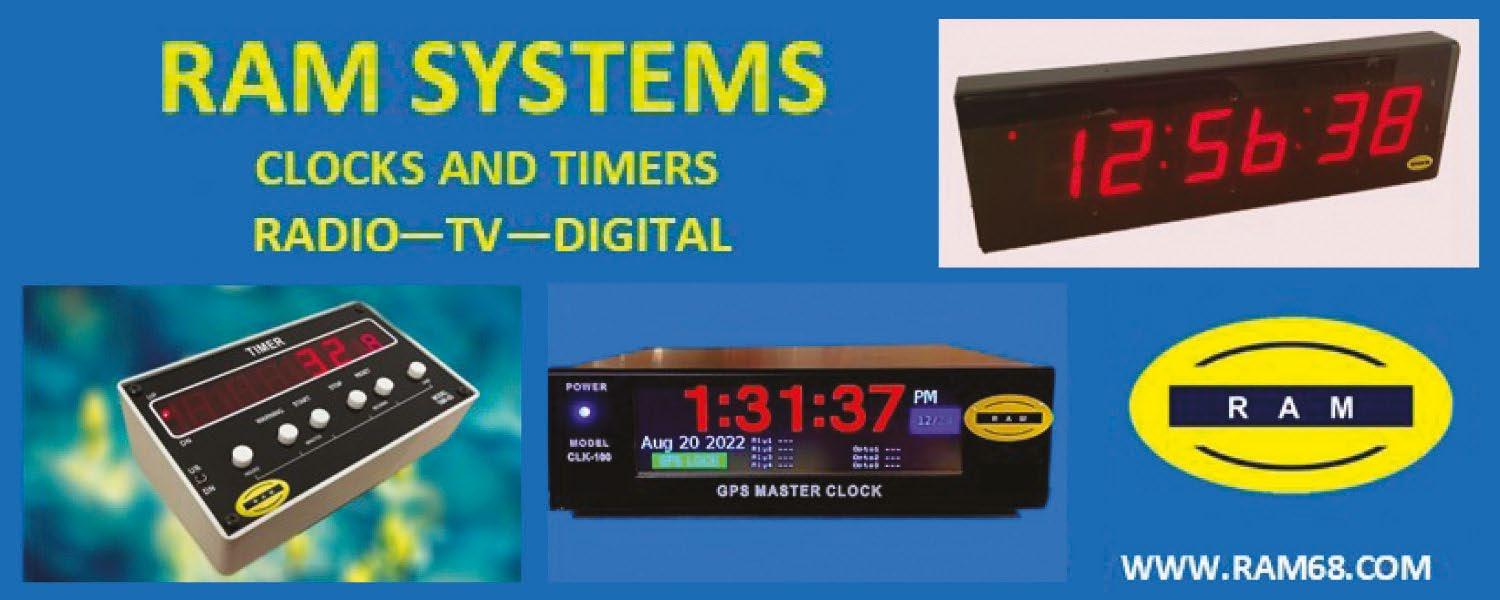
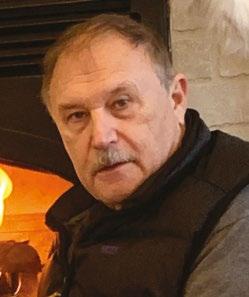
line level feed from a mixer to the USB Gizmo input), the receive end would receive audio through the left channel as transmitted through the Gizmo, and adjust accordingly.
The compact unit is about 3 by 5 inches and has ears for mounting underneath a desktop or on a shelf. It ships with mounting hardware, StudioHub adapters and a USB cable. This device will find uses in broadcast studios, production rooms, live venues and anywhere you need quality audio from a computer. The USB Audio Gizmo from Angry Audio has a list price of $299.
Transmitters About Buyer’s Guide
The Buyer’s Guide section appears in every other issue, focusing on a particular category of equipment and services. It is intended to help buyers know what’s on the market and gain insight into how their peers are using such products.
Two feeds from Twin Falls with GatesAir
CSN International deploys HD Radio so it can feed a translator


ased in picturesque
BTwin Falls, Idaho, listener-supported CSN International brings Christian youth-oriented music and bible teachings to 42 full-power AM and FM stations and 337 translators in 43 states.
The network had been fully analog until September, when it took the step of launching its first HD Radio signal on KKJA(FM) in Redmond, Ore., a 1.5 kW ERP station serving the broader market of Bend.
There was another first to accompany the milestone, as the broadcaster chose GatesAir as its transmission supplier for the first time to satisfy specific technical requirements.
The project’s main motivation was to bring Effect Radio, CSN’s secondary network, to the Bend market and gain value from a redundant translator that provided no additional coverage to KKJA.
“Our network is mainly satellite-fed, but we have to feed commercial-band translators with off-air signals,” said Dustin Pamplona, CSN International’s director of engineering. “The only off-air signal we could receive at this location was from KKJA, a CSN station. Due to FCC rules, we could not get Effect Radio to the translator via satellite. Adding an HD Radio service allowed us to feed an off-air signal to the translator using the HD2 channel.”
That requirement inspired Pamplona to evaluate a small group of HD Radio transmission suppliers with which the company hadn’t worked before. One particular element of the GatesAir solution, which includes a Flexiva FAX aircooled transmitter and FMXi 4g program importer/exporter, made it stand apart.
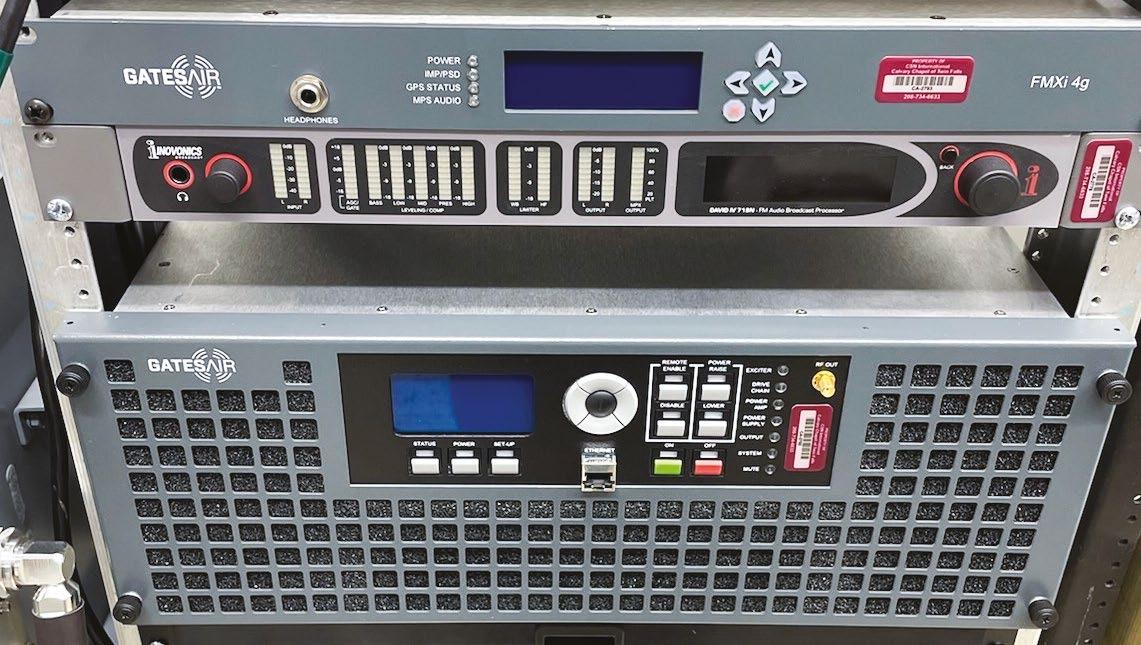
“The FMXi 4g includes embedded software to manage FM and HD Radio time alignment, which I found impressive,” said Pamplona. “The other solution I strongly considered required a separate hardware device to address

time alignment. That magnified how GatesAir offered a more polished system.”
Pamplona installed the FMXi 4g with the FAX transmitter at the RF site due to the distance from Twin Falls.
“The transmitter is on top of Grizzly Mountain, so by co-locating the importer and exporter we have no concerns about maintaining a stable internet connection,” said Pamplona, who adds that the Flexiva design is “modular, accessible and well thought out,” simplifying maintenance.
“The Flexiva has been rock-solid in performance and provides our listeners in the Bend market with a robust signal for our secondary programming.”
“Adding an HD Radio service allowed us to feed an off-air signal to the translator using the HD2 channel.

Tech Update
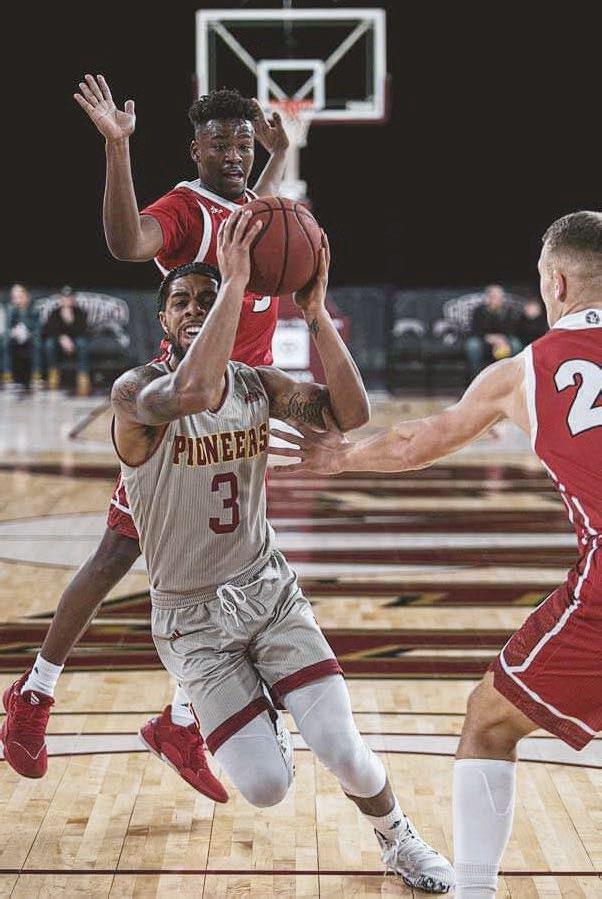
EventCAST Is Ready for Events, Emergencies and STAs

EventCAST Portable Radio Systems can fill the gap when you need to light up an AM signal quickly due to loss of your main transmitter/antenna/site, to maintain an STA or want to broadcast local event traffic or parking info.
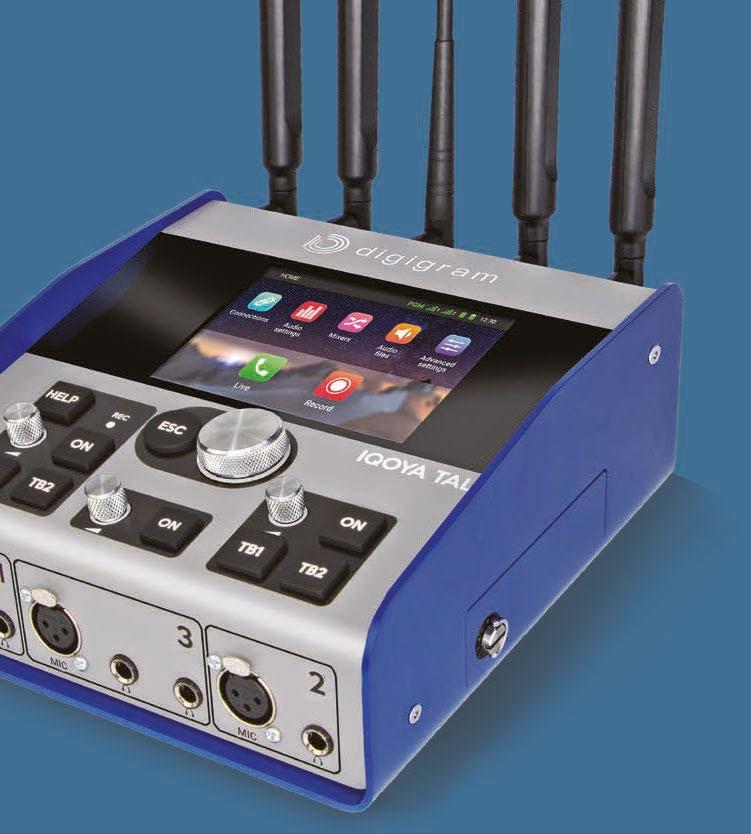
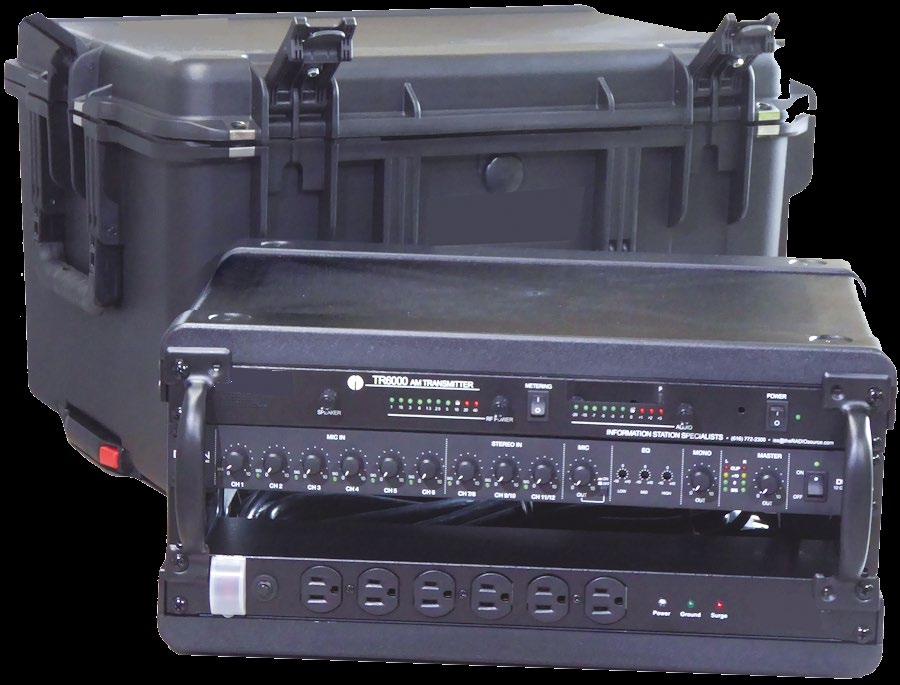
When an emergency is imminent, EventCAST Systems can be on the air in short order to inform motorists regarding safety procedures and status. The portable 10-watt transmitter and antenna system deliver a 3- to 5-mile daytime signal radius and can operate variously under Part 73 or Part 90 (TIS) licenses.
The system includes a program mixer for live feeds and a USBbased audio system for easy program repetition.

Information Station Specialists says its units are “kept hot and ready to ship on a moment’s notice.”
Users include radio companies, departments of public safety, health and emergency management, and state departments of transportation. Examples include Birmingham Emergency Communications in Alabama; Chennault International Air Show in Louisiana; the Dallas Zoo in Texas; Grand Canyon National Park in
Arizona; the Kentucky State Fair; and PGA golf tournaments including the US Open.
The company can help with TIS licensing when the application is for public safety.
Info: www.theradiosource.com/services/eventcast.htm

Tech Update
Bext XL 3000 Is Compact FM Solution
Bext Corp. is promoting the compact XL 3000 FM Transmitter.
Following on its bigger brother the XL 6000, a 6 kW transmitter in a compact design, the XL 3000 provides 3.3 kW of power in a lightweight form factor of three rack units tall and 18 inches deep.

Protections against high reflected power and other excessive environmental issues are provided.
The XL 3000 has a front-panel USB connection that allows the user to view or download files including the user manual and factory final test report. This function is


Like other XL Series transmitters, the XL 3000 can be powered by either three-phase or single-phase AC power.
“Special attention was given to achieving highest possible efficiency, which will not only lower electricity bills, but by having minimal energy lost into heat it allows the transmitter to operate with low-speed fans and extends the life of the internal electronics, which are not subjected to the typical high heat produced by other less efficient brands of transmitters.”
active even when the transmitter is powered down or not connected to a power line.
A color touch screen gives access to most functions. The transmitter can be remote controlled via web page, SNMP and oldschool traditional contact connections. Options include audio over IP, dynamic RDS, SNMP2 and AES-EBU digital audio input.

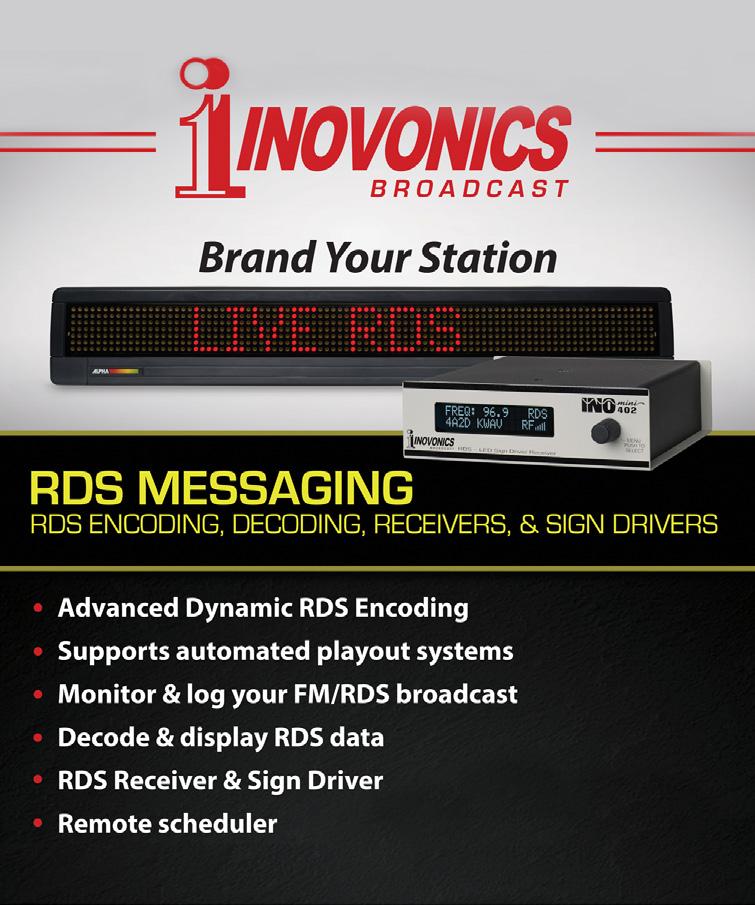
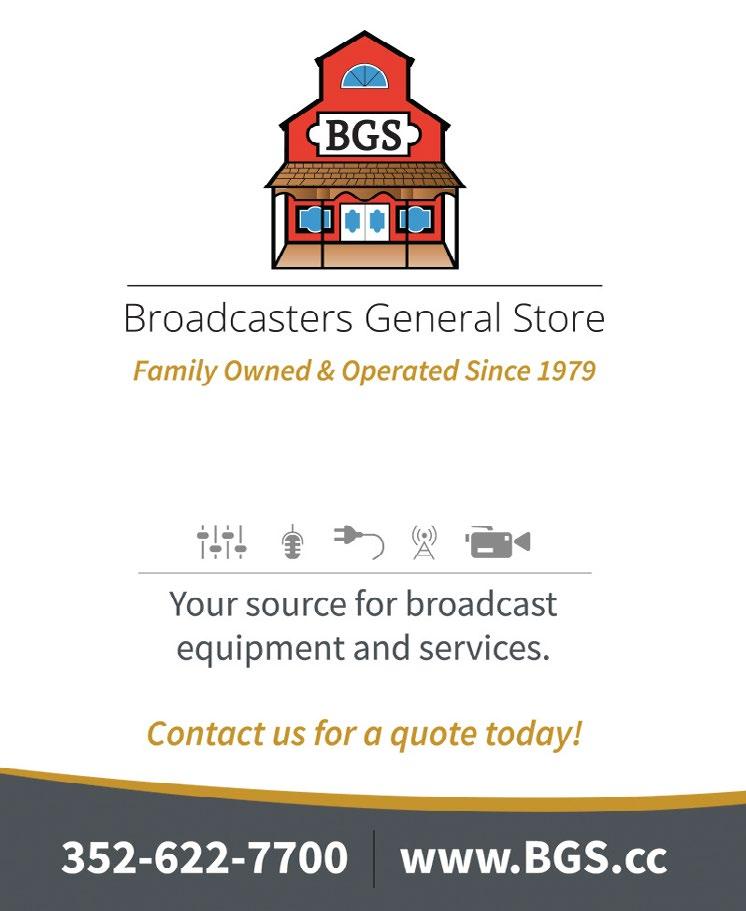
Bext also makes antennas and RF combiners, filters and accessories.
Info: www.bext.com
WJMJ adds HD Radio with sub-channels in mind
Catholic station deploys a Nautel GV5 with HD MultiCast+ Importer/Exporter
Several years ago WJMJ(FM) in Hartford, Conn., approached contract engineer and consultant Tom Ray about taking the station HD for improved outreach to the Hispanic community.

“At the station’s existing site, HD operation would’ve been problematic,” Ray said.
“We applied for a location change and were able to move the transmitter site from Burlington to Farmington. With an antenna 950 feet up the ‘Channel 61 television tower,’ we were able to upgrade from a Class B1 to a full Class B and, the best part, the HD signal could be operated at –10 dBc. Win-win!”
Ray said tower management had an available 4-1/16-inch transmission line that was pressurized and spec’d out. “So we needed a transmitter that would produce the required 2.14 kW transmitter power output
Tech Update
Ecreso AiO Line Expands
WorldCast Systems has extended its Ecreso AiO portfolio to include the Ecreso FM 100W and Ecreso FM 300W lowpower transmitters.
“The new AiO series is designed to meet the needs of modern broadcasters who must align rising costs while adapting to increasingly complex infrastructures with non-extensible resources,” the company states.
The 100W and 300W AiO series are compact 2U FM transmitters that use a softwareoriented design and are highlighted for their total cost of ownership and audio quality.
while allowing us to produce an HD signal at –10 dBc. We chose a Nautel GV5, which had plenty of headroom and the latest Gen 4 HD MultiCast+ Importer/Exporter.”
Ray has installed many AM/FM transmitters over the years. While this job was complex, he said, it also was
one of the easiest.
In addition to running Hispanic Catholic programming on the HD2 signal, WJMJ runs EWTN Catholic programming on the HD3.
“Setting up and partitioning the HD signal on the MultiCast+ Importer/ Exporter was relatively easy, and both HD sub-channels sound outstanding.” The station also runs programming for the visually impaired using the GV transmitter’s built-in 67 kHz subcarrier generation and built-in RDS generator.
“This innovative design overcomes the limitations of legacy technologies, where the virtualization of FM transmitters and antennas is not possible. Instead, AiO Series products enable users to replace outdated hardware at transmission sites via software integration of Audemat RDS Encoder, multiband processing and APT IP Decoder.”

Features include a new RF planar design and hot-swappable power supply and fan.
Info: www.worldcastsystems.com
Ray said the GV5’s compact size and weight gave no concern to the building’s mechanical engineers. The electrical demand, and load on emergency generator, was considerably less than the five fullpower HD television stations and other Class B FM located in the building.
“I am impressed with both Nautel’s transmitter quality and staff I had the pleasure of interacting with. But what impresses me most is that I can get someone on the phone to help service a 25-year-old Nautel Ampfet transmitter, plus still get parts for it. That’s customer service for you.”
Tech Update

Aqua Broadcast Offers Cobalt for FM





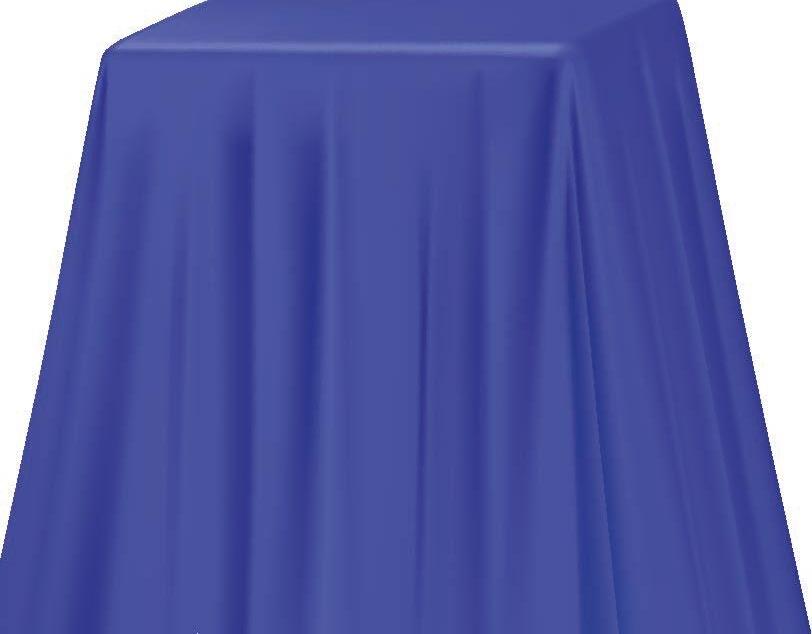





Aqua Broadcast cites its Cobalt series FM transmitter line for superior audio quality and sound clarity thanks to Direct-toChannel Digital technology.

Available in power levels from 10 watts to 5 kW, Cobalt products run on a customized Linux OS system. Inputs and outputs include analog, AES/ EBU, digital MPX (AES-192), Ethernet, USB, GPIO and GPS Sync with built-in SFN capabilities.

Intuitive joystick controls with haptic feedback and a clear RGB display help with fast setup. Features include a four-band audio processor with bass enhancement, pilot protection, wide AGC, numerous presets, SNMP management and the ability to send emails and alerts and monitor audio remotely from a browser.
“The advanced communication package with intuitive web interface and remote control via Ethernet (https) lets you make changes or monitor the Cobalt transmitter,” the company states.
Aqua also highlights easy access to components, softwarecontrolled variable fan speed, high AC efficiency and a compact design with reduced weight.
Depending on the model, Cobalt has an optional DC input that lets you run the transmitter on a 48V DC power system and opens possibilities for off-grid power options. On 2U products a second PSU can be specified, providing two independent power inputs in parallel, for further confidence and seamless switching if a power supply were to suffer a fault.
Info: www.aquabroadcast.co.uk

Tech Update
Tunwall Radio Supports AM DAs


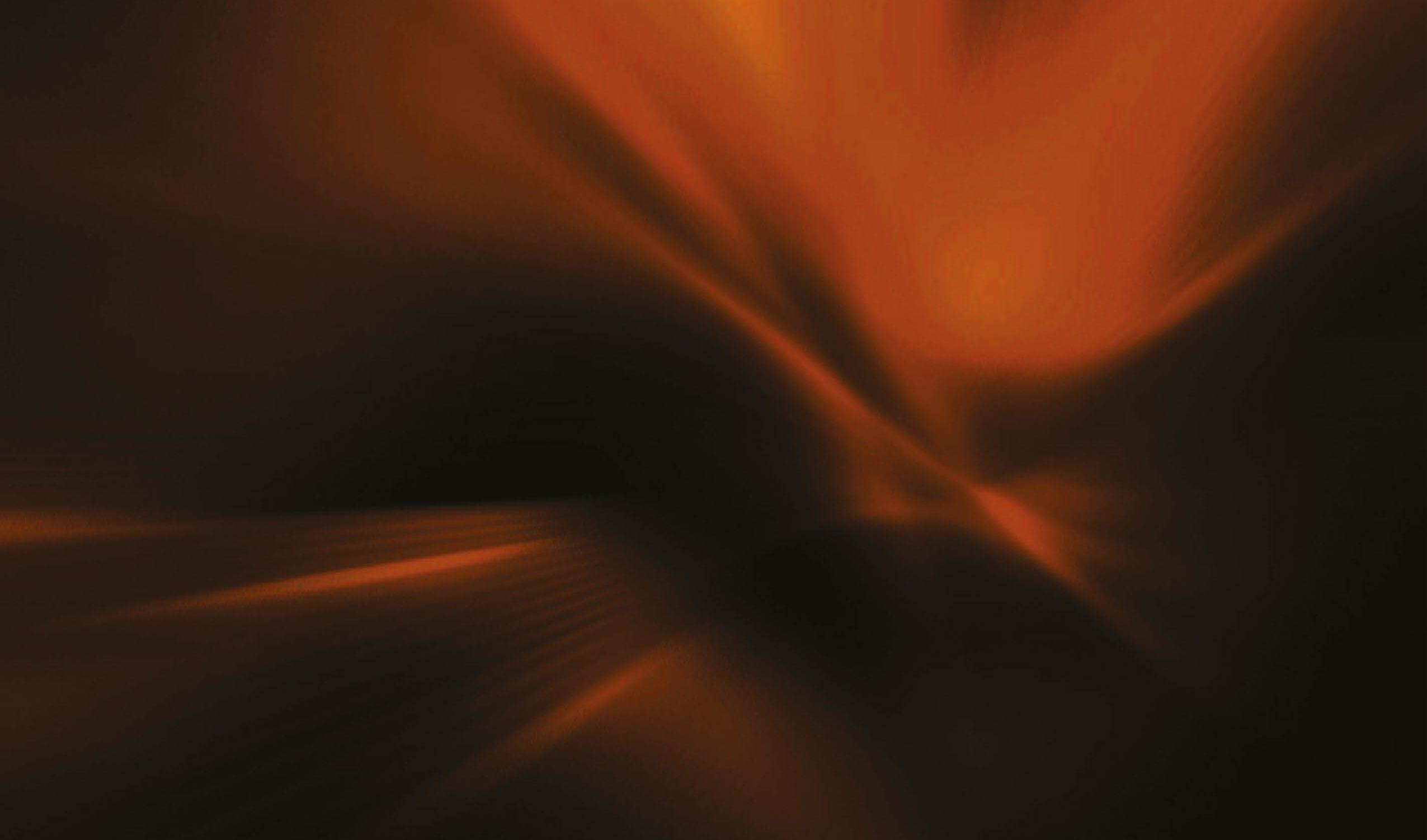
Tunwall Radio now offers SNMP-enabled phasor and transmitter controllers for AM directional systems.
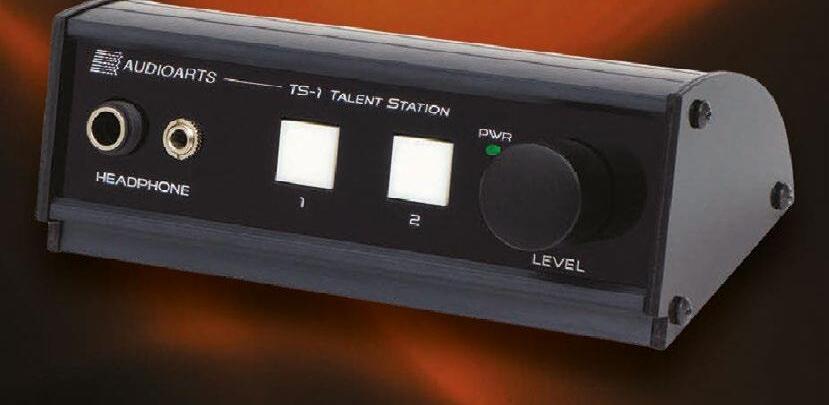
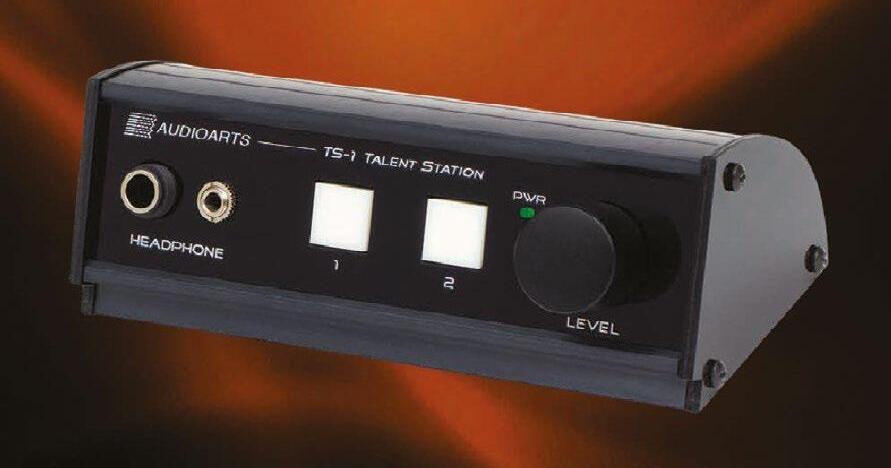
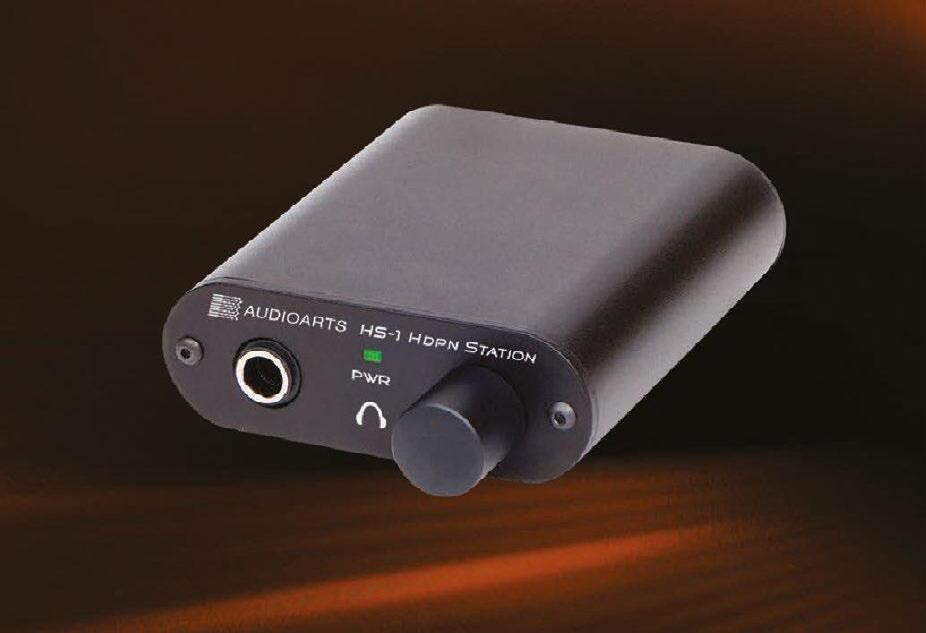
“Front-panel pushbuttons are provided for local control, and SNMP v2c allows users to remotely perform commands and check the status of transmitter and pattern selection, as well as the position of all contactors in the phasor/antenna system,” it states.
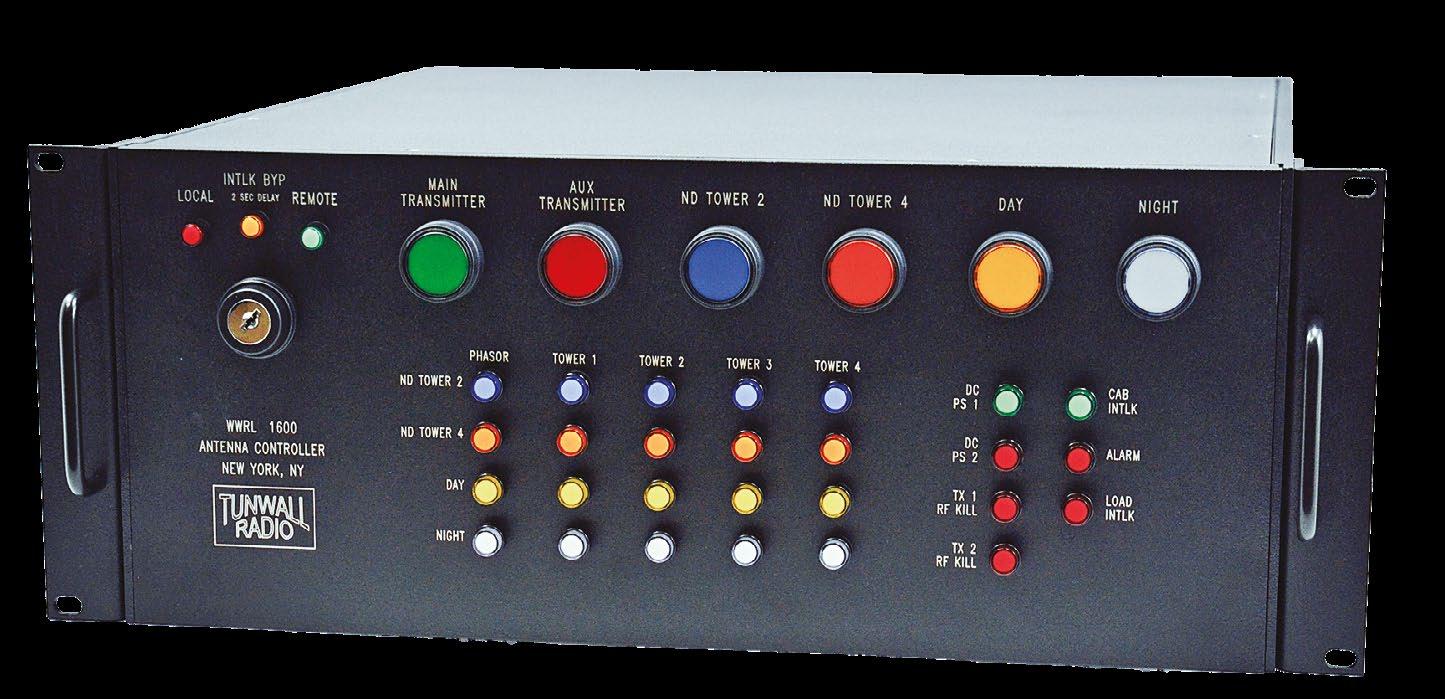
Access via internet connection is available through the built-in web server. Standard remote connections can also be made to terminal strips on the rear panel of the controller.
“AM directional controllers are now housed in enclosed aluminum rackmount boxes instead of open-panel and shelf designs used previously. All controller functions are preprogrammed and extensively tested in our shop, making for simple installation and operation.”
Timed sequences remove RF power, move contactors and verify positions before RF power is restored. Front-panel indicators show the pattern and transmitter in use, and the position of all RF
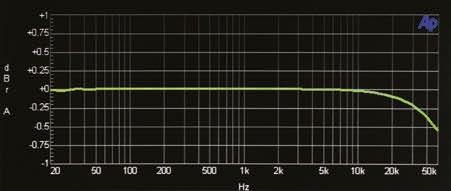
contactors in the system. Local and remote modes are selected with a key switch. There is also an emergency transmitter interlock bypass mode.
SNMP v2c capability is also available on the company’s switch controllers for FM.
Info: http://tunwallradio.com
WSPK upgrades with Broadcast Electronics
Pamal Broadcasting deploys BE STX10 transmitter in the Hudson Valley
DataWave LLC recently installed a Broadcast Electronics STX FM transmitter for Pamal Broadcasting station WSPK(FM) in Poughkeepsie, N.Y.
A technical services company based in the Hudson Valley, DataWave provides engineering services for radio and television station across the United States. K104.7 is a 50,000-watt Class B CHR station serving the valley and New York City; it transmits from the top of Mount Beacon, the tallest point in the valley, with an elevation of 1,600 feet and clear line of site to Manhattan.
A crew from DataWave led by President David Groth managed the upgrade for Pamal Broadcasting. Groth said the previous solid-state transmitter, made by another manufacturer, suffered a failure that caused it to catch on fire.
“Winter was approaching, so we needed to act fast.” Pamal Broadcasting ordered a STX10 10 kW transmitter, which BE was able to deliver in less than three weeks, something no one else was able to do, he said.
“WSPK operates with just under 5 kW for the required TPO. The STX10 provides plenty of headroom for cool operation and expansion for HD Radio.”
Growth said the remote nature of the site, especially in winter when access is limited to Sno-Cats or a helicopter, demands that installed gear be reliable.
“People like to talk about transmitter features like a web GUI and energy efficiency. The BE STX excels there too, but the most important efficiency to our clients and our company is time efficiency. I want to be completing projects on time and have dinner at home with my family instead of being stuck on a frozen mountaintop dealing with a failed transmitter.”
DataWave Principal Paul Thurst said the compact STX10 fit easily into the existing Middle Atlantic rack.

“There was an immediately noticeable improvement in the audio quality when we turned the STX10 on. WSPK directly competes
with New York City stations for local listeners, so having great audio gives the station an edge,” he said. “In fact, many listeners, the program director and even another engineer contacted us to ask if we had changed our audio processing.” Broadcast Electronics, based in Quincy, Ill., is part of the Elenos Group.

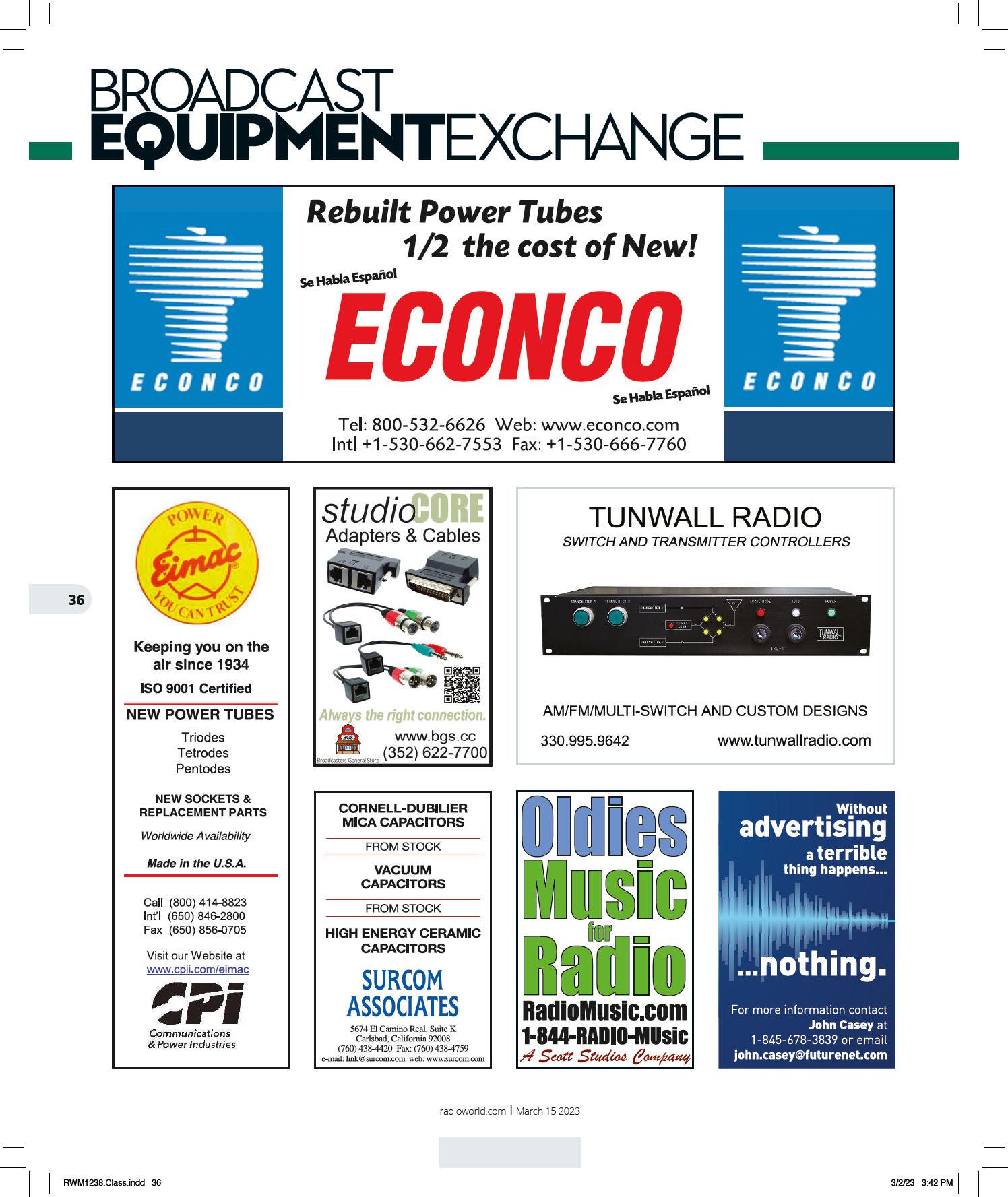 Writer Rob Quicke Professor of Communication, William Paterson University
Writer Rob Quicke Professor of Communication, William Paterson University
College radio history: The race is on
A new society hopes to unite alumni and help nourish the spirit of college radio
Iusher an alumnus into our studio at Brave New Radio, William Paterson University. A switch is thrown and the small room lights up. In a whispered, reverent voice, the alum turns to me and says, “This was the place. This was it!”
It might have been an unremarkable, empty studio to some, but for this person, it was like bringing the past vividly to life. The music. The friends. The good times. Memories swirled like a thick mist.
For many alumni, on-campus broadcast experiences hold a special place in their hearts. College radio might have been where they made lifelong friends, found a spouse or significant other, had mind-altering experiences and embraced a community united by its love of music. Many view it as an almost magical chapter in their lives. I know its power from my own experience in the early ‘90s.
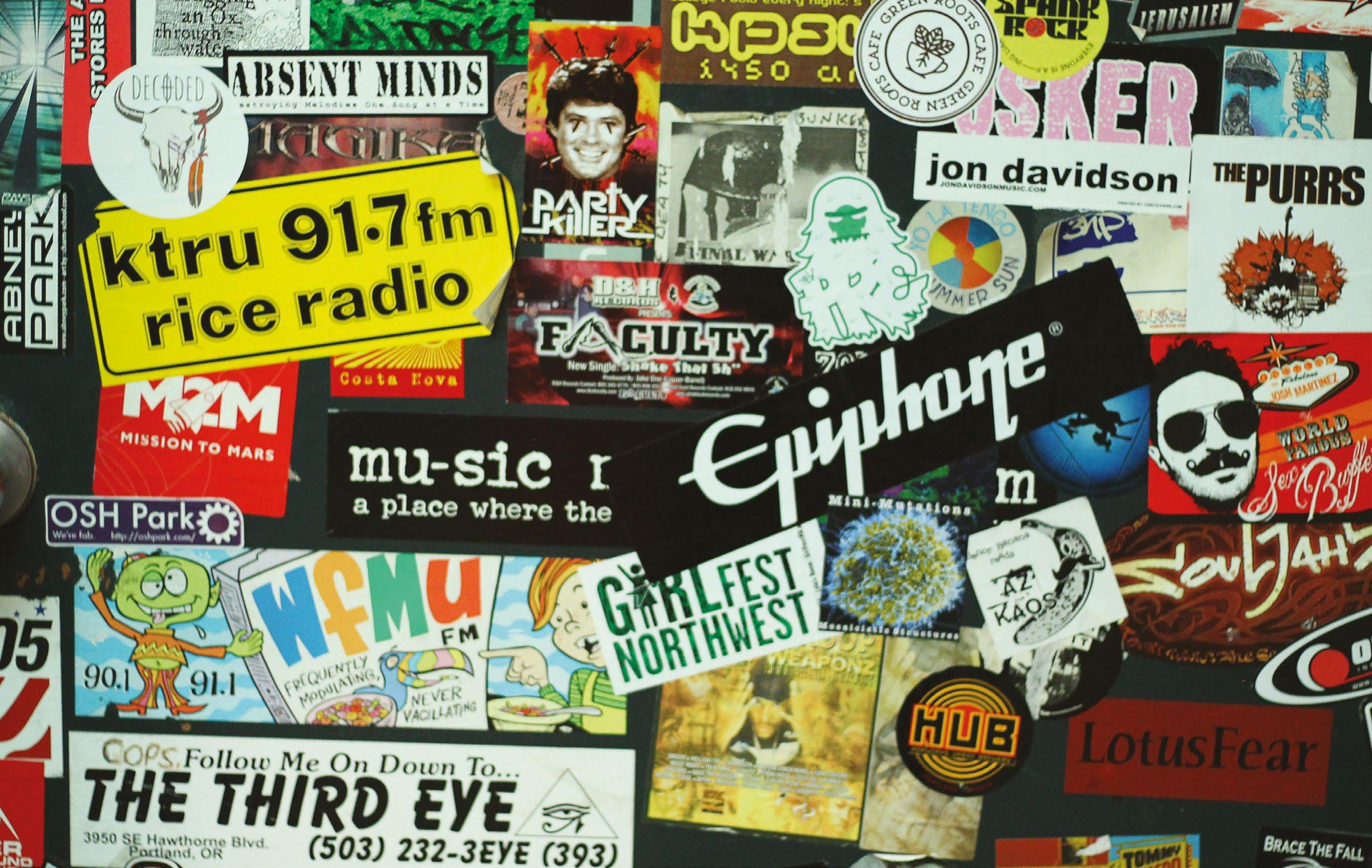
Launched last fall, the College Radio Society, organized by the College Radio Foundation, is an effort to unite college radio alumni and to keep the magic of those memories alive. It also will remind the public that college radio is very much alive and benefiting those involved with it and those who listen.
Volunteer effort
“For me, it began in 1969,” remembers Jay Rosen. “I was friended by Pete Fornatale when he was at WFUV, Fordham University. He invited me up to his show and I met other people there. I took some courses and then became a member of WFUV when it was student-run.”
Since then, Rosen has been passionate about college radio, serving on the board of the Intercollegiate Broadcasting System and now also as an admin for the new College Radio Society Facebook group.
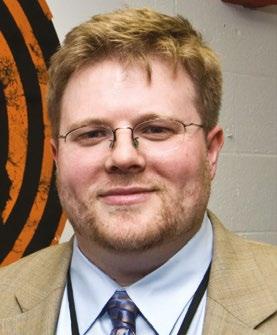
I’m working alongside Jay and other volunteers who want to unite as many alumni as possible. Collectively, we can speak to the transformative power of college radio. The CRS wants to harness that enthusiasm and access cherished memories by producing a zine and a podcast, alongside other events.
The CRS also aims to support important ongoing work about college radio’s history. For example, a longform documentary about college radio called “35000 Watts” is in production.
Director Michael Millard started at KTXT(FM) in Lubbock, Texas, in 1992. “I’ve spoken with hundreds of college radio alumni and I have yet to meet a single person who doesn’t feel that college radio played a crucial role in shaping the person they became,” Millard says.
“The history of college radio has largely been written by each individual station, so there aren’t a lot of comprehensive histories that tell the larger story.”
Millard senses the urgency in collecting those stories. “The early history is slipping away, and many of the people who pioneered college radio are no longer with us. It is important to capture as much history as possible now.”
Meanwhile the first major book about the history of college radio in over two decades is coming out soon. Dr. Katherine Rye Jewell is associate professor of history at Fitchburg State University in Massachusetts. Her book “Live from the Underground: A History of College Radio” is to be published this fall by UNC Press.
“I started writing this book after my college radio station, WRVU at Vanderbilt University, was sold in 2011,” says Jewell. Seeing it sold despite strong opposition from students prompted Jewell to ask further questions.
“I understood that college radio had a particular role in culture and in higher education — as well as a relationship to policy — but I began to explore how its reputation emerged historically and its influence grew after I became curious as to why the administration no longer viewed the signal as valuable. The result is this book, plus another that explores college radio’s emergence in large numbers on FM in the 1960s and 1970s.”
Jewell also works with Jennifer Waits as a co-chair of the College, Community and Educational Radio Caucus of the
Radio Preservation Task Force formed by the Library of Congress in 2014. It’s a serious effort toward the preservation of radio history and “supports and promotes the preservation of college, community and educational radio archives and resources.”
Waits has been writing about college radio culture since 2008 and was one of the co-founders of Radio Survivor.
“On our website, podcast and syndicated radio show, we report on and discuss topics related to radio and sound, including college radio. I am fascinated by it and started researching and writing about college radio when I realized that it was not well-represented in academia and in the popular press.”
That passion has meant traveling thousands of miles. “I started touring radio stations and have visited more than 100 — and more than 165 stations of all types. I work to capture aspects of each station’s rich history.”
You can help
These efforts give the sense that college radio could be about to get a moment of overdue recognition. With the College Radio Society, we hope to bring awareness about this work; we hope people will join us because of the fun memories of their college radio days, when lasting friendships formed.
For Waits it’s about getting deserved recognition for those involved in its story: “College radio has existed since the beginning of radio, and it’s important to ensure that stories of student contributions to every era of radio history are recognized within the overall history of radio.”
More Info
To join the society, visit www. collegeradio. org/the-collegeradio-society/

Millard agrees. “College radio has played a much larger role in most people’s lives than they realize,” he says. “Thousands of people who were not in entertainment or journalism also got their start in college radio. It was a place to gain confidence, find your voice and learn how to work with other like-minded people towards a common goal. Those are attributes that are just as important today as they were 50 years ago, and I think it is critical for people to understand the role college radio still plays in so many students’ lives.”
If you agree, I urge you to join us to bring this new society to life.
The author is founder of the College Radio Foundation and College Radio Day.
“The history of college radio has largely been written by each individual station, so there aren’t a lot of comprehensive histories that tell the larger story. ”
